
How To Write A Research Paper
Step-By-Step Tutorial With Examples + FREE Template
By: Derek Jansen (MBA) | Expert Reviewer: Dr Eunice Rautenbach | March 2024
For many students, crafting a strong research paper from scratch can feel like a daunting task – and rightly so! In this post, we’ll unpack what a research paper is, what it needs to do , and how to write one – in three easy steps. 🙂
Overview: Writing A Research Paper
What (exactly) is a research paper.
- How to write a research paper
- Stage 1 : Topic & literature search
- Stage 2 : Structure & outline
- Stage 3 : Iterative writing
- Key takeaways
Let’s start by asking the most important question, “ What is a research paper? ”.
Simply put, a research paper is a scholarly written work where the writer (that’s you!) answers a specific question (this is called a research question ) through evidence-based arguments . Evidence-based is the keyword here. In other words, a research paper is different from an essay or other writing assignments that draw from the writer’s personal opinions or experiences. With a research paper, it’s all about building your arguments based on evidence (we’ll talk more about that evidence a little later).
Now, it’s worth noting that there are many different types of research papers , including analytical papers (the type I just described), argumentative papers, and interpretative papers. Here, we’ll focus on analytical papers , as these are some of the most common – but if you’re keen to learn about other types of research papers, be sure to check out the rest of the blog .
With that basic foundation laid, let’s get down to business and look at how to write a research paper .

Overview: The 3-Stage Process
While there are, of course, many potential approaches you can take to write a research paper, there are typically three stages to the writing process. So, in this tutorial, we’ll present a straightforward three-step process that we use when working with students at Grad Coach.
These three steps are:
- Finding a research topic and reviewing the existing literature
- Developing a provisional structure and outline for your paper, and
- Writing up your initial draft and then refining it iteratively
Let’s dig into each of these.
Need a helping hand?
Step 1: Find a topic and review the literature
As we mentioned earlier, in a research paper, you, as the researcher, will try to answer a question . More specifically, that’s called a research question , and it sets the direction of your entire paper. What’s important to understand though is that you’ll need to answer that research question with the help of high-quality sources – for example, journal articles, government reports, case studies, and so on. We’ll circle back to this in a minute.
The first stage of the research process is deciding on what your research question will be and then reviewing the existing literature (in other words, past studies and papers) to see what they say about that specific research question. In some cases, your professor may provide you with a predetermined research question (or set of questions). However, in many cases, you’ll need to find your own research question within a certain topic area.
Finding a strong research question hinges on identifying a meaningful research gap – in other words, an area that’s lacking in existing research. There’s a lot to unpack here, so if you wanna learn more, check out the plain-language explainer video below.
Once you’ve figured out which question (or questions) you’ll attempt to answer in your research paper, you’ll need to do a deep dive into the existing literature – this is called a “ literature search ”. Again, there are many ways to go about this, but your most likely starting point will be Google Scholar .
If you’re new to Google Scholar, think of it as Google for the academic world. You can start by simply entering a few different keywords that are relevant to your research question and it will then present a host of articles for you to review. What you want to pay close attention to here is the number of citations for each paper – the more citations a paper has, the more credible it is (generally speaking – there are some exceptions, of course).

Ideally, what you’re looking for are well-cited papers that are highly relevant to your topic. That said, keep in mind that citations are a cumulative metric , so older papers will often have more citations than newer papers – just because they’ve been around for longer. So, don’t fixate on this metric in isolation – relevance and recency are also very important.
Beyond Google Scholar, you’ll also definitely want to check out academic databases and aggregators such as Science Direct, PubMed, JStor and so on. These will often overlap with the results that you find in Google Scholar, but they can also reveal some hidden gems – so, be sure to check them out.
Once you’ve worked your way through all the literature, you’ll want to catalogue all this information in some sort of spreadsheet so that you can easily recall who said what, when and within what context. If you’d like, we’ve got a free literature spreadsheet that helps you do exactly that.

Step 2: Develop a structure and outline
With your research question pinned down and your literature digested and catalogued, it’s time to move on to planning your actual research paper .
It might sound obvious, but it’s really important to have some sort of rough outline in place before you start writing your paper. So often, we see students eagerly rushing into the writing phase, only to land up with a disjointed research paper that rambles on in multiple
Now, the secret here is to not get caught up in the fine details . Realistically, all you need at this stage is a bullet-point list that describes (in broad strokes) what you’ll discuss and in what order. It’s also useful to remember that you’re not glued to this outline – in all likelihood, you’ll chop and change some sections once you start writing, and that’s perfectly okay. What’s important is that you have some sort of roadmap in place from the start.

At this stage you might be wondering, “ But how should I structure my research paper? ”. Well, there’s no one-size-fits-all solution here, but in general, a research paper will consist of a few relatively standardised components:
- Introduction
- Literature review
- Methodology
Let’s take a look at each of these.
First up is the introduction section . As the name suggests, the purpose of the introduction is to set the scene for your research paper. There are usually (at least) four ingredients that go into this section – these are the background to the topic, the research problem and resultant research question , and the justification or rationale. If you’re interested, the video below unpacks the introduction section in more detail.
The next section of your research paper will typically be your literature review . Remember all that literature you worked through earlier? Well, this is where you’ll present your interpretation of all that content . You’ll do this by writing about recent trends, developments, and arguments within the literature – but more specifically, those that are relevant to your research question . The literature review can oftentimes seem a little daunting, even to seasoned researchers, so be sure to check out our extensive collection of literature review content here .
With the introduction and lit review out of the way, the next section of your paper is the research methodology . In a nutshell, the methodology section should describe to your reader what you did (beyond just reviewing the existing literature) to answer your research question. For example, what data did you collect, how did you collect that data, how did you analyse that data and so on? For each choice, you’ll also need to justify why you chose to do it that way, and what the strengths and weaknesses of your approach were.
Now, it’s worth mentioning that for some research papers, this aspect of the project may be a lot simpler . For example, you may only need to draw on secondary sources (in other words, existing data sets). In some cases, you may just be asked to draw your conclusions from the literature search itself (in other words, there may be no data analysis at all). But, if you are required to collect and analyse data, you’ll need to pay a lot of attention to the methodology section. The video below provides an example of what the methodology section might look like.
By this stage of your paper, you will have explained what your research question is, what the existing literature has to say about that question, and how you analysed additional data to try to answer your question. So, the natural next step is to present your analysis of that data . This section is usually called the “results” or “analysis” section and this is where you’ll showcase your findings.
Depending on your school’s requirements, you may need to present and interpret the data in one section – or you might split the presentation and the interpretation into two sections. In the latter case, your “results” section will just describe the data, and the “discussion” is where you’ll interpret that data and explicitly link your analysis back to your research question. If you’re not sure which approach to take, check in with your professor or take a look at past papers to see what the norms are for your programme.
Alright – once you’ve presented and discussed your results, it’s time to wrap it up . This usually takes the form of the “ conclusion ” section. In the conclusion, you’ll need to highlight the key takeaways from your study and close the loop by explicitly answering your research question. Again, the exact requirements here will vary depending on your programme (and you may not even need a conclusion section at all) – so be sure to check with your professor if you’re unsure.
Step 3: Write and refine
Finally, it’s time to get writing. All too often though, students hit a brick wall right about here… So, how do you avoid this happening to you?
Well, there’s a lot to be said when it comes to writing a research paper (or any sort of academic piece), but we’ll share three practical tips to help you get started.
First and foremost , it’s essential to approach your writing as an iterative process. In other words, you need to start with a really messy first draft and then polish it over multiple rounds of editing. Don’t waste your time trying to write a perfect research paper in one go. Instead, take the pressure off yourself by adopting an iterative approach.
Secondly , it’s important to always lean towards critical writing , rather than descriptive writing. What does this mean? Well, at the simplest level, descriptive writing focuses on the “ what ”, while critical writing digs into the “ so what ” – in other words, the implications . If you’re not familiar with these two types of writing, don’t worry! You can find a plain-language explanation here.
Last but not least, you’ll need to get your referencing right. Specifically, you’ll need to provide credible, correctly formatted citations for the statements you make. We see students making referencing mistakes all the time and it costs them dearly. The good news is that you can easily avoid this by using a simple reference manager . If you don’t have one, check out our video about Mendeley, an easy (and free) reference management tool that you can start using today.
Recap: Key Takeaways
We’ve covered a lot of ground here. To recap, the three steps to writing a high-quality research paper are:
- To choose a research question and review the literature
- To plan your paper structure and draft an outline
- To take an iterative approach to writing, focusing on critical writing and strong referencing
Remember, this is just a b ig-picture overview of the research paper development process and there’s a lot more nuance to unpack. So, be sure to grab a copy of our free research paper template to learn more about how to write a research paper.
You Might Also Like:

Submit a Comment Cancel reply
Your email address will not be published. Required fields are marked *
Save my name, email, and website in this browser for the next time I comment.
- Print Friendly
- U.S. Locations
- UMGC Europe
- Learn Online
- Find Answers
- 855-655-8682
- Current Students
Online Guide to Writing and Research
The research process, explore more of umgc.
- Online Guide to Writing
Planning and Writing a Research Paper
Mastering the complex academic skill of writing a research paper will prepare you to enter the discourse community of your chosen area of study with excitement and confidence. Writing a research paper can seem like a daunting task, but if you take the time in the pages ahead to learn how to break the writing process down, you will be amazed at the level of comfort and control you feel when preparing your assignment.
Mailing Address: 3501 University Blvd. East, Adelphi, MD 20783 This work is licensed under a Creative Commons Attribution-NonCommercial-ShareAlike 4.0 International License . © 2022 UMGC. All links to external sites were verified at the time of publication. UMGC is not responsible for the validity or integrity of information located at external sites.
Table of Contents: Online Guide to Writing
Chapter 1: College Writing
How Does College Writing Differ from Workplace Writing?
What Is College Writing?
Why So Much Emphasis on Writing?
Chapter 2: The Writing Process
Doing Exploratory Research
Getting from Notes to Your Draft
Introduction
Prewriting - Techniques to Get Started - Mining Your Intuition
Prewriting: Targeting Your Audience
Prewriting: Techniques to Get Started
Prewriting: Understanding Your Assignment
Rewriting: Being Your Own Critic
Rewriting: Creating a Revision Strategy
Rewriting: Getting Feedback
Rewriting: The Final Draft
Techniques to Get Started - Outlining
Techniques to Get Started - Using Systematic Techniques
Thesis Statement and Controlling Idea
Writing: Getting from Notes to Your Draft - Freewriting
Writing: Getting from Notes to Your Draft - Summarizing Your Ideas
Writing: Outlining What You Will Write
Chapter 3: Thinking Strategies
A Word About Style, Voice, and Tone
A Word About Style, Voice, and Tone: Style Through Vocabulary and Diction
Critical Strategies and Writing
Critical Strategies and Writing: Analysis
Critical Strategies and Writing: Evaluation
Critical Strategies and Writing: Persuasion
Critical Strategies and Writing: Synthesis
Developing a Paper Using Strategies
Kinds of Assignments You Will Write
Patterns for Presenting Information
Patterns for Presenting Information: Critiques
Patterns for Presenting Information: Discussing Raw Data
Patterns for Presenting Information: General-to-Specific Pattern
Patterns for Presenting Information: Problem-Cause-Solution Pattern
Patterns for Presenting Information: Specific-to-General Pattern
Patterns for Presenting Information: Summaries and Abstracts
Supporting with Research and Examples
Writing Essay Examinations
Writing Essay Examinations: Make Your Answer Relevant and Complete
Writing Essay Examinations: Organize Thinking Before Writing
Writing Essay Examinations: Read and Understand the Question
Chapter 4: The Research Process
Planning and Writing a Research Paper: Ask a Research Question
Planning and Writing a Research Paper: Cite Sources
Planning and Writing a Research Paper: Collect Evidence
Planning and Writing a Research Paper: Decide Your Point of View, or Role, for Your Research
Planning and Writing a Research Paper: Draw Conclusions
Planning and Writing a Research Paper: Find a Topic and Get an Overview
Planning and Writing a Research Paper: Manage Your Resources
Planning and Writing a Research Paper: Outline
Planning and Writing a Research Paper: Survey the Literature
Planning and Writing a Research Paper: Work Your Sources into Your Research Writing
Research Resources: Where Are Research Resources Found? - Human Resources
Research Resources: What Are Research Resources?
Research Resources: Where Are Research Resources Found?
Research Resources: Where Are Research Resources Found? - Electronic Resources
Research Resources: Where Are Research Resources Found? - Print Resources
Structuring the Research Paper: Formal Research Structure
Structuring the Research Paper: Informal Research Structure
The Nature of Research
The Research Assignment: How Should Research Sources Be Evaluated?
The Research Assignment: When Is Research Needed?
The Research Assignment: Why Perform Research?
Chapter 5: Academic Integrity
Academic Integrity
Giving Credit to Sources
Giving Credit to Sources: Copyright Laws
Giving Credit to Sources: Documentation
Giving Credit to Sources: Style Guides
Integrating Sources
Practicing Academic Integrity
Practicing Academic Integrity: Keeping Accurate Records
Practicing Academic Integrity: Managing Source Material
Practicing Academic Integrity: Managing Source Material - Paraphrasing Your Source
Practicing Academic Integrity: Managing Source Material - Quoting Your Source
Practicing Academic Integrity: Managing Source Material - Summarizing Your Sources
Types of Documentation
Types of Documentation: Bibliographies and Source Lists
Types of Documentation: Citing World Wide Web Sources
Types of Documentation: In-Text or Parenthetical Citations
Types of Documentation: In-Text or Parenthetical Citations - APA Style
Types of Documentation: In-Text or Parenthetical Citations - CSE/CBE Style
Types of Documentation: In-Text or Parenthetical Citations - Chicago Style
Types of Documentation: In-Text or Parenthetical Citations - MLA Style
Types of Documentation: Note Citations
Chapter 6: Using Library Resources
Finding Library Resources
Chapter 7: Assessing Your Writing
How Is Writing Graded?
How Is Writing Graded?: A General Assessment Tool
The Draft Stage
The Draft Stage: The First Draft
The Draft Stage: The Revision Process and the Final Draft
The Draft Stage: Using Feedback
The Research Stage
Using Assessment to Improve Your Writing
Chapter 8: Other Frequently Assigned Papers
Reviews and Reaction Papers: Article and Book Reviews
Reviews and Reaction Papers: Reaction Papers
Writing Arguments
Writing Arguments: Adapting the Argument Structure
Writing Arguments: Purposes of Argument
Writing Arguments: References to Consult for Writing Arguments
Writing Arguments: Steps to Writing an Argument - Anticipate Active Opposition
Writing Arguments: Steps to Writing an Argument - Determine Your Organization
Writing Arguments: Steps to Writing an Argument - Develop Your Argument
Writing Arguments: Steps to Writing an Argument - Introduce Your Argument
Writing Arguments: Steps to Writing an Argument - State Your Thesis or Proposition
Writing Arguments: Steps to Writing an Argument - Write Your Conclusion
Writing Arguments: Types of Argument
Appendix A: Books to Help Improve Your Writing
Dictionaries
General Style Manuals
Researching on the Internet
Special Style Manuals
Writing Handbooks
Appendix B: Collaborative Writing and Peer Reviewing
Collaborative Writing: Assignments to Accompany the Group Project
Collaborative Writing: Informal Progress Report
Collaborative Writing: Issues to Resolve
Collaborative Writing: Methodology
Collaborative Writing: Peer Evaluation
Collaborative Writing: Tasks of Collaborative Writing Group Members
Collaborative Writing: Writing Plan
General Introduction
Peer Reviewing
Appendix C: Developing an Improvement Plan
Working with Your Instructor’s Comments and Grades
Appendix D: Writing Plan and Project Schedule
Devising a Writing Project Plan and Schedule
Reviewing Your Plan with Others
By using our website you agree to our use of cookies. Learn more about how we use cookies by reading our Privacy Policy .

How to Write a Research Paper
Use the links below to jump directly to any section of this guide:
Research Paper Fundamentals
How to choose a topic or question, how to create a working hypothesis or thesis, common research paper methodologies, how to gather and organize evidence , how to write an outline for your research paper, how to write a rough draft, how to revise your draft, how to produce a final draft, resources for teachers .
It is not fair to say that no one writes anymore. Just about everyone writes text messages, brief emails, or social media posts every single day. Yet, most people don't have a lot of practice with the formal, organized writing required for a good academic research paper. This guide contains links to a variety of resources that can help demystify the process. Some of these resources are intended for teachers; they contain exercises, activities, and teaching strategies. Other resources are intended for direct use by students who are struggling to write papers, or are looking for tips to make the process go more smoothly.
The resources in this section are designed to help students understand the different types of research papers, the general research process, and how to manage their time. Below, you'll find links from university writing centers, the trusted Purdue Online Writing Lab, and more.
What is an Academic Research Paper?
"Genre and the Research Paper" (Purdue OWL)
There are different types of research papers. Different types of scholarly questions will lend themselves to one format or another. This is a brief introduction to the two main genres of research paper: analytic and argumentative.
"7 Most Popular Types of Research Papers" (Personal-writer.com)
This resource discusses formats that high school students commonly encounter, such as the compare and contrast essay and the definitional essay. Please note that the inclusion of this link is not an endorsement of this company's paid service.
How to Prepare and Plan Out Writing a Research Paper
Teachers can give their students a step-by-step guide like these to help them understand the different steps of the research paper process. These guides can be combined with the time management tools in the next subsection to help students come up with customized calendars for completing their papers.
"Ten Steps for Writing Research Papers" (American University)
This resource from American University is a comprehensive guide to the research paper writing process, and includes examples of proper research questions and thesis topics.
"Steps in Writing a Research Paper" (SUNY Empire State College)
This guide breaks the research paper process into 11 steps. Each "step" links to a separate page, which describes the work entailed in completing it.
How to Manage Time Effectively
The links below will help students determine how much time is necessary to complete a paper. If your sources are not available online or at your local library, you'll need to leave extra time for the Interlibrary Loan process. Remember that, even if you do not need to consult secondary sources, you'll still need to leave yourself ample time to organize your thoughts.
"Research Paper Planner: Timeline" (Baylor University)
This interactive resource from Baylor University creates a suggested writing schedule based on how much time a student has to work on the assignment.
"Research Paper Planner" (UCLA)
UCLA's library offers this step-by-step guide to the research paper writing process, which also includes a suggested planning calendar.
There's a reason teachers spend a long time talking about choosing a good topic. Without a good topic and a well-formulated research question, it is almost impossible to write a clear and organized paper. The resources below will help you generate ideas and formulate precise questions.
"How to Select a Research Topic" (Univ. of Michigan-Flint)
This resource is designed for college students who are struggling to come up with an appropriate topic. A student who uses this resource and still feels unsure about his or her topic should consult the course instructor for further personalized assistance.
"25 Interesting Research Paper Topics to Get You Started" (Kibin)
This resource, which is probably most appropriate for high school students, provides a list of specific topics to help get students started. It is broken into subsections, such as "paper topics on local issues."
"Writing a Good Research Question" (Grand Canyon University)
This introduction to research questions includes some embedded videos, as well as links to scholarly articles on research questions. This resource would be most appropriate for teachers who are planning lessons on research paper fundamentals.
"How to Write a Research Question the Right Way" (Kibin)
This student-focused resource provides more detail on writing research questions. The language is accessible, and there are embedded videos and examples of good and bad questions.
It is important to have a rough hypothesis or thesis in mind at the beginning of the research process. People who have a sense of what they want to say will have an easier time sorting through scholarly sources and other information. The key, of course, is not to become too wedded to the draft hypothesis or thesis. Just about every working thesis gets changed during the research process.
CrashCourse Video: "Sociology Research Methods" (YouTube)
Although this video is tailored to sociology students, it is applicable to students in a variety of social science disciplines. This video does a good job demonstrating the connection between the brainstorming that goes into selecting a research question and the formulation of a working hypothesis.
"How to Write a Thesis Statement for an Analytical Essay" (YouTube)
Students writing analytical essays will not develop the same type of working hypothesis as students who are writing research papers in other disciplines. For these students, developing the working thesis may happen as a part of the rough draft (see the relevant section below).
"Research Hypothesis" (Oakland Univ.)
This resource provides some examples of hypotheses in social science disciplines like Political Science and Criminal Justice. These sample hypotheses may also be useful for students in other soft social sciences and humanities disciplines like History.
When grading a research paper, instructors look for a consistent methodology. This section will help you understand different methodological approaches used in research papers. Students will get the most out of these resources if they use them to help prepare for conversations with teachers or discussions in class.
"Types of Research Designs" (USC)
A "research design," used for complex papers, is related to the paper's method. This resource contains introductions to a variety of popular research designs in the social sciences. Although it is not the most intuitive site to read, the information here is very valuable.
"Major Research Methods" (YouTube)
Although this video is a bit on the dry side, it provides a comprehensive overview of the major research methodologies in a format that might be more accessible to students who have struggled with textbooks or other written resources.
"Humanities Research Strategies" (USC)
This is a portal where students can learn about four methodological approaches for humanities papers: Historical Methodologies, Textual Criticism, Conceptual Analysis, and the Synoptic method.
"Selected Major Social Science Research Methods: Overview" (National Academies Press)
This appendix from the book Using Science as Evidence in Public Policy , printed by National Academies Press, introduces some methods used in social science papers.
"Organizing Your Social Sciences Research Paper: 6. The Methodology" (USC)
This resource from the University of Southern California's library contains tips for writing a methodology section in a research paper.
How to Determine the Best Methodology for You
Anyone who is new to writing research papers should be sure to select a method in consultation with their instructor. These resources can be used to help prepare for that discussion. They may also be used on their own by more advanced students.
"Choosing Appropriate Research Methodologies" (Palgrave Study Skills)
This friendly and approachable resource from Palgrave Macmillan can be used by students who are just starting to think about appropriate methodologies.
"How to Choose Your Research Methods" (NFER (UK))
This is another approachable resource students can use to help narrow down the most appropriate methods for their research projects.
The resources in this section introduce the process of gathering scholarly sources and collecting evidence. You'll find a range of material here, from introductory guides to advanced explications best suited to college students. Please consult the LitCharts How to Do Academic Research guide for a more comprehensive list of resources devoted to finding scholarly literature.
Google Scholar
Students who have access to library websites with detailed research guides should start there, but people who do not have access to those resources can begin their search for secondary literature here.
"Gathering Appropriate Information" (Texas Gateway)
This resource from the Texas Gateway for online resources introduces students to the research process, and contains interactive exercises. The level of complexity is suitable for middle school, high school, and introductory college classrooms.
"An Overview of Quantitative and Qualitative Data Collection Methods" (NSF)
This PDF from the National Science Foundation goes into detail about best practices and pitfalls in data collection across multiple types of methodologies.
"Social Science Methods for Data Collection and Analysis" (Swiss FIT)
This resource is appropriate for advanced undergraduates or teachers looking to create lessons on research design and data collection. It covers techniques for gathering data via interviews, observations, and other methods.
"Collecting Data by In-depth Interviewing" (Leeds Univ.)
This resource contains enough information about conducting interviews to make it useful for teachers who want to create a lesson plan, but is also accessible enough for college juniors or seniors to make use of it on their own.
There is no "one size fits all" outlining technique. Some students might devote all their energy and attention to the outline in order to avoid the paper. Other students may benefit from being made to sit down and organize their thoughts into a lengthy sentence outline. The resources in this section include strategies and templates for multiple types of outlines.
"Topic vs. Sentence Outlines" (UC Berkeley)
This resource introduces two basic approaches to outlining: the shorter topic-based approach, and the longer, more detailed sentence-based approach. This resource also contains videos on how to develop paper paragraphs from the sentence-based outline.
"Types of Outlines and Samples" (Purdue OWL)
The Purdue Online Writing Lab's guide is a slightly less detailed discussion of different types of outlines. It contains several sample outlines.
"Writing An Outline" (Austin C.C.)
This resource from a community college contains sample outlines from an American history class that students can use as models.
"How to Structure an Outline for a College Paper" (YouTube)
This brief (sub-2 minute) video from the ExpertVillage YouTube channel provides a model of outline writing for students who are struggling with the idea.
"Outlining" (Harvard)
This is a good resource to consult after completing a draft outline. It offers suggestions for making sure your outline avoids things like unnecessary repetition.
As with outlines, rough drafts can take on many different forms. These resources introduce teachers and students to the various approaches to writing a rough draft. This section also includes resources that will help you cite your sources appropriately according to the MLA, Chicago, and APA style manuals.
"Creating a Rough Draft for a Research Paper" (Univ. of Minnesota)
This resource is useful for teachers in particular, as it provides some suggested exercises to help students with writing a basic rough draft.
Rough Draft Assignment (Duke of Definition)
This sample assignment, with a brief list of tips, was developed by a high school teacher who runs a very successful and well-reviewed page of educational resources.
"Creating the First Draft of Your Research Paper" (Concordia Univ.)
This resource will be helpful for perfectionists or procrastinators, as it opens by discussing the problem of avoiding writing. It also provides a short list of suggestions meant to get students writing.
Using Proper Citations
There is no such thing as a rough draft of a scholarly citation. These links to the three major citation guides will ensure that your citations follow the correct format. Please consult the LitCharts How to Cite Your Sources guide for more resources.
Chicago Manual of Style Citation Guide
Some call The Chicago Manual of Style , which was first published in 1906, "the editors' Bible." The manual is now in its 17th edition, and is popular in the social sciences, historical journals, and some other fields in the humanities.
APA Citation Guide
According to the American Psychological Association, this guide was developed to aid reading comprehension, clarity of communication, and to reduce bias in language in the social and behavioral sciences. Its first full edition was published in 1952, and it is now in its sixth edition.
MLA Citation Guide
The Modern Language Association style is used most commonly within the liberal arts and humanities. The MLA Style Manual and Guide to Scholarly Publishing was first published in 1985 and (as of 2008) is in its third edition.
Any professional scholar will tell you that the best research papers are made in the revision stage. No matter how strong your research question or working thesis, it is not possible to write a truly outstanding paper without devoting energy to revision. These resources provide examples of revision exercises for the classroom, as well as tips for students working independently.
"The Art of Revision" (Univ. of Arizona)
This resource provides a wealth of information and suggestions for both students and teachers. There is a list of suggested exercises that teachers might use in class, along with a revision checklist that is useful for teachers and students alike.
"Script for Workshop on Revision" (Vanderbilt University)
Vanderbilt's guide for leading a 50-minute revision workshop can serve as a model for teachers who wish to guide students through the revision process during classtime.
"Revising Your Paper" (Univ. of Washington)
This detailed handout was designed for students who are beginning the revision process. It discusses different approaches and methods for revision, and also includes a detailed list of things students should look for while they revise.
"Revising Drafts" (UNC Writing Center)
This resource is designed for students and suggests things to look for during the revision process. It provides steps for the process and has a FAQ for students who have questions about why it is important to revise.
Conferencing with Writing Tutors and Instructors
No writer is so good that he or she can't benefit from meeting with instructors or peer tutors. These resources from university writing, learning, and communication centers provide suggestions for how to get the most out of these one-on-one meetings.
"Getting Feedback" (UNC Writing Center)
This very helpful resource talks about how to ask for feedback during the entire writing process. It contains possible questions that students might ask when developing an outline, during the revision process, and after the final draft has been graded.
"Prepare for Your Tutoring Session" (Otis College of Art and Design)
This guide from a university's student learning center contains a lot of helpful tips for getting the most out of working with a writing tutor.
"The Importance of Asking Your Professor" (Univ. of Waterloo)
This article from the university's Writing and Communication Centre's blog contains some suggestions for how and when to get help from professors and Teaching Assistants.
Once you've revised your first draft, you're well on your way to handing in a polished paper. These resources—each of them produced by writing professionals at colleges and universities—outline the steps required in order to produce a final draft. You'll find proofreading tips and checklists in text and video form.
"Developing a Final Draft of a Research Paper" (Univ. of Minnesota)
While this resource contains suggestions for revision, it also features a couple of helpful checklists for the last stages of completing a final draft.
Basic Final Draft Tips and Checklist (Univ. of Maryland-University College)
This short and accessible resource, part of UMUC's very thorough online guide to writing and research, contains a very basic checklist for students who are getting ready to turn in their final drafts.
Final Draft Checklist (Everett C.C.)
This is another accessible final draft checklist, appropriate for both high school and college students. It suggests reading your essay aloud at least once.
"How to Proofread Your Final Draft" (YouTube)
This video (approximately 5 minutes), produced by Eastern Washington University, gives students tips on proofreading final drafts.
"Proofreading Tips" (Georgia Southern-Armstrong)
This guide will help students learn how to spot common errors in their papers. It suggests focusing on content and editing for grammar and mechanics.
This final set of resources is intended specifically for high school and college instructors. It provides links to unit plans and classroom exercises that can help improve students' research and writing skills. You'll find resources that give an overview of the process, along with activities that focus on how to begin and how to carry out research.
"Research Paper Complete Resources Pack" (Teachers Pay Teachers)
This packet of assignments, rubrics, and other resources is designed for high school students. The resources in this packet are aligned to Common Core standards.
"Research Paper—Complete Unit" (Teachers Pay Teachers)
This packet of assignments, notes, PowerPoints, and other resources has a 4/4 rating with over 700 ratings. It is designed for high school teachers, but might also be useful to college instructors who work with freshmen.
"Teaching Students to Write Good Papers" (Yale)
This resource from Yale's Center for Teaching and Learning is designed for college instructors, and it includes links to appropriate activities and exercises.
"Research Paper Writing: An Overview" (CUNY Brooklyn)
CUNY Brooklyn offers this complete lesson plan for introducing students to research papers. It includes an accompanying set of PowerPoint slides.
"Lesson Plan: How to Begin Writing a Research Paper" (San Jose State Univ.)
This lesson plan is designed for students in the health sciences, so teachers will have to modify it for their own needs. It includes a breakdown of the brainstorming, topic selection, and research question process.
"Quantitative Techniques for Social Science Research" (Univ. of Pittsburgh)
This is a set of PowerPoint slides that can be used to introduce students to a variety of quantitative methods used in the social sciences.
- PDFs for all 136 Lit Terms we cover
- Downloads of 1931 LitCharts Lit Guides
- Teacher Editions for every Lit Guide
- Explanations and citation info for 40,744 quotes across 1931 books
- Downloadable (PDF) line-by-line translations of every Shakespeare play
Need something? Request a new guide .
How can we improve? Share feedback .
LitCharts is hiring!

Writing for research
Research preparation is done. the next stage is to start writing "writing for research" is the second stage of your research journey. .
Learn the fundamentals of manuscript preparation and how to write them, including how to structure your article and write a great abstract.
Complete the topics within "Writing for research" and increase your chances of getting published.
Modules in writing for research.

Generative AI in the Publishing Community

Author policies on the use of Generative AI

Generative AI: Q&A

Generative AI: New policies, opportunities, and risks

The why and how of data visualization

Data visualization and choosing the right plot

Three contexts for data visualisation

The evolution of data visualization

From article to art: Creating visual abstracts - Parts 1 & 2: A Guide to Visual Abstracts

From article to art: Creating visual abstracts - Part 3: Designing
From article to art: creating visual abstracts - part 4: sketching the appropriate visual elements.

Structuring your article correctly

Guide to reference managers: How to effectively manage your references

How to prepare your manuscript

How to write an abstract and improve your article

How to prepare a proposal for a review article
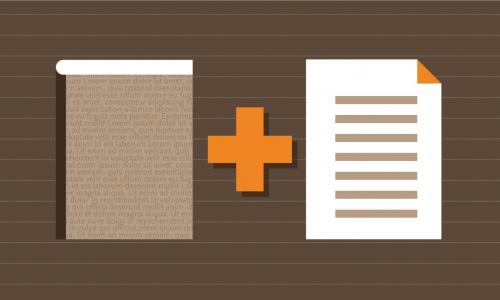
Writing a persuasive cover letter for your manuscript
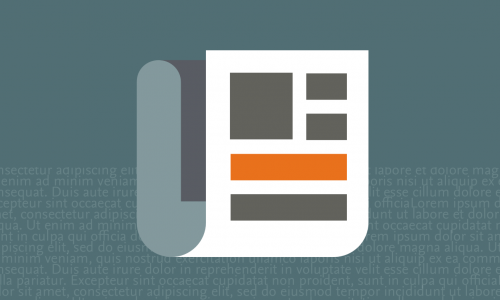
How to turn your thesis into an article

5 Diseases ailing research – and how to cure them

Using proper manuscript language

10 tips for writing a truly terrible journal article
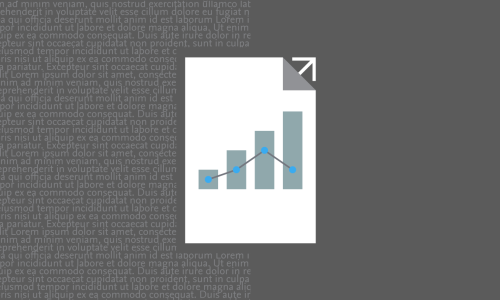
How to write and review a methods article

How to design effective figures for review articles

How to write for an interdisciplinary audience

An editor’s guide to writing a review article

How to write case reports

Systematic reviews 101

Beginners’ guide to writing a manuscript in LaTeX

Research Paper: A step-by-step guide: 1. Getting Started
- 1. Getting Started
- 2. Topic Ideas
- 3. Thesis Statement & Outline
- 4. Appropriate Sources
- 5. Search Techniques
- 6. Taking Notes & Documenting Sources
- 7. Evaluating Sources
- 8. Citations & Plagiarism
- 9. Writing Your Research Paper

Let's Get Started
We are here to help.
Writing research papers is an important part of your college learning experience, training you to research and write effectively. However, if you don't know how to start, writing a research paper can be a daunting task. Don't worry! We will guide you through the process. The sections in this step-by-step guide allow you to learn at your own pace. Revisit the information as much as you need. Let's get started!
What Is a Research Paper?
A research paper is an expanded essay that presents your investigation and argument on a focused topic based on the information you gathered. It demonstrates not only your understanding of available information from experts in the area of your research, but also your evaluation and insight on the subject matter through an orderly and logical presentation of your argument.
What Are the Qualities of a Good Research Paper?
Make sure you know the requirements of your specific assignment. But in general, a good research paper will have the following qualities:
- A strong and focused thesis statement
- Logically organized a rguments and main points
- Each main point is supported by persuasive facts and examples
- Opposing viewpoints are included and rebutted, showing why the author's argument is more valid
- The paper shows the author's understanding of the topic and the material being used
- The work is original, not plagiarized
- Every source is correctly documented and credited in a recognized citation style
- The paper is written in clear language in a style suitable for college research
Need help with your research paper? A librarian can help guide you through the process of research.
Here are ways to contact a librarian:
- Email the library at [email protected]
- Find the librarian best suited for your subject area
- Use our 24/7 chat service (use the chat box on the right)
Ebooks on Writing
Looking for a really detailed guide? Try these ebooks:
Research Paper Process
Following the research process will help you with your paper.
Select a Topic
Find Background Information
Formulate a Thesis Statement
Create an Outline
Locate and Retrieve Materials
Evaluate Information
Write the Paper
Review Paper and Citations
- Next: 2. Topic Ideas >>
- Last Updated: Apr 18, 2023 12:12 PM
- URL: https://butte.libguides.com/ResearchPaper
A Nature Research Service

- On-demand Courses
- Write & publish
Writing a Research Paper
For students and researchers in the natural sciences who are new to scientific writing or wish to improve the quality of their written output
Taught by 17 Nature Portfolio journal Editors
4.5 hours of learning
15-minute lessons
6-module course with certificate
About this course
This is the first edition of the ‘Writing a Research Paper’ course. We recommend you take the updated, second edition of the course even if you have already started this older version.
'Writing a Research Paper' focuses on how to write an effective, clear and concise article that will appeal to a broad audience as well as attracting the attention of your peers.
What you'll learn
- What editors look for in a great paper
- How to write clearly, develop a great title and abstract, and structure your paper
- How to manage and present your data
Free Sample What makes a great paper?
8 lessons 50m
Free Sample Elements of writing style
6 lessons 25m
Free Sample Titles and abstracts
11 lessons 40m
Free Sample From introduction to conclusion
12 lessons 40m
Free Sample Data management
11 lessons 50m
Free Sample Data presentation
11 lessons 55m
Free Sample Writing a Research Paper: Free Sample - section
No subscription yet? Try this free sample to preview lessons from the course
7 lessons 30m
Start this module
Delivered by Nature Portfolio journal Editors
This course is delivered by 19 Nature Portfolio journal Editors, giving researchers an unparalleled insight into the scientific writing process. Our panel of experts include:
Gemma Alderton
Former Senior Editor, Nature Reviews Cancer
Tanguy Chouard
Senior Editor Biology, Nature
Elisa De Ranieri
Editor in Chief, Nature Communications
Chief Editor, Nature Energy
Zoltan Fehervari
Senior Editor, Nature Immunology
Iulia Georgescu
Chief Editor, Nature Reviews Physics
Peter Gorsuch
Chief Editor, Nature Research Editing Service
Patrick Goymer
Chief Editor, Nature Ecology & Evolution
Andrew Hufton
Chief Editor, Scientific Data
Federico Levi
Senior Editor, Nature Physics
Leonie Mueck
Former Senior Editor Physical Sciences, Nature
Sadaf Shadan
Anke sparmann.
Senior Editor, Nature Structural and Molecular Biology
Chris Surridge
Chief Editor, Nature Plants
Liesbeth Venema
Chief Editor, Nature Machine Intelligence
Bart Verberck
Regional Executive Editor, Springer Nature
Alexia-Ileana Zaromytidou
Chief Editor, Nature Cell Biology
Feedback from course users
The shortness of the videos allows me to fit them in between work and research. This format also meant that I could take in the information bit by bit.. Postdoctoral student, United States
Discover related courses
Publishing a research paper.
Learn about the publication process and the things you need to consider
Writing and Publishing a Review Paper
Prepare yourself to write and publish a great review paper
Access options
For researchers.
- Register and complete our free course offering , or try a free sample of any of our paid-for courses
- Recommend our courses to your institution, so that we can contact them to discuss becoming a subscriber
For institutions, departments and labs
Find out which of our subscription plans best suits your needs See our subscription plans
Does my institution provide full course access?
When registering, you’ll be asked to select your institution first. If your institution is listed, it has subscribed and provides full access to our on-demand courses catalogue.
My institution isn’t listed!
Select „other“ and register with an individual account. This allows you to access all our free sample course modules, and our entirely free course on peer review. You might also want to recommend our courses to your institution.
I am in charge of purchasing training materials for our lab / department / institution. Buy a subscription
Start this course
Full course access via institutional subscription only. More info
Institutions, departments and labs: Give your research full access to our entire course catalogue

Image Credits
- Visit the University of Nebraska–Lincoln
- Apply to the University of Nebraska–Lincoln
- Give to the University of Nebraska–Lincoln
Search Form
Research writing, research writing a resource for grad students and postdocs.
Whether you’re writing a paper for class, developing a research proposal, or writing a journal article for publication, completing this self-paced program will broaden your understanding of research writing and help you organize your thoughts, write more clearly, and save you time.
We developed this online research writing resource to help you become more productive writers and researchers. Each module has been split into units that will take you less than ten minutes to complete, so you’re able to view the modules in their entirety or as segments.
Module 1 Overview of Research Process
Anything you write involves organization and a logical flow of ideas, so understanding the logic of the research process before beginning to write is essential. Simply put, you need to put your writing in the larger context.
Module 2 Structure of an Academic Argument
In this resource we'll focus on the most common structure of academic arguments and on the steps in the story line, or the means by which a narrative thread is developed to carry the argument from the beginning to the end of a piece of writing.
Module 3 Fundamental Writing Skills for Researchers
Everyone is capable of being a good writer, even without any innate skill. A snapshot of research writing is given, from presenting a research question in context of current knowledge to interpreting your findings.
Module 4 Editing: Analyzing Your Writing Strengths and Weaknesses
By reflecting on these summary principles and checking your work based on the questions presented here, you’ll ensure your research is both easily accessible and understandable, therefore persuading your reader that your problem, approach, and findings are valid.
Module 5 Finding and Citing Appropriate Literature
This guide will help you navigate UNL’s Libraries website to find and cite relevant articles for your coursework and research.
Module 6 Writing For Publication
Even with a set of valid, novel, and significant findings, research isn't necessarily publishable. The best papers place the described work in context, identify gaps in the knowledge base, and explain the importance of the new information.
Module 7 Peer Feedback in Writing Groups
Somewhere between your first and final draft, your paper might get stuck in limbo. Sure, there are words on the document pages, but your writing still needs improvement. This is the point where other focused readers can provide feedback and help you edit your work to further develop your text.
Module 8 Developing Effective Writing Habits
In this module, you’ll learn how to overcome the barriers that keep you from finishing—or starting—a writing project and how to develop a writing routine. With a few of these tools under your belt, you’ll be ready to form a writing habit that saves you time and maximizes your productivity.
Module 9 Writing with Integrity
This module addresses several important themes of academic integrity: plagiarism, falsification, and authorship. Simply put, we must (a) give credit to those from whom we borrow words, images or ideas; (b) not manipulate research so as to inaccurately or dishonestly represent findings; and (c) share appropriately the credit and rewards for authorship of publications.
SPECIAL APPRECIATION
This online writing resource is the result of the concerted and collaborative efforts of many individuals, units, and departments at the University of Nebraska–Lincoln.
All of us at the Office of Graduate Studies and the Office of Postdoctoral Studies gratefully acknowledge the support and assistance of the following individuals and units:
Neal Bryan , Associate Director–Office of Postdoc Studies & Graduate Student Development, for his involvement in all aspects of program development, including the initial planning, working closely with the web developer and videographer, and editing and formatting all content.
Aaron Coleman , Senior Web Developer–Office of University Communications, and the entire UNL communications team, for their creativity in design.
Catherine Daniel , University of South Australia, for allowing us to use excerpts of her materials in the Structure of an Academic Argument module.
David Fitzgibbon , Director of Video Services–Office of University Communications, for his expert videography and editing of the Fundamental Writing Skills for Researchers and Writing for Publication workshops.
Richard Lombardo , Director of Postdoc Studies & Graduate Student Development, for developing the program, directing the project, designing/presenting the Fundamental Writing Skills for Researchers workshop, and writing and editing many of the modules.
Charlene Maxey-Harris , Chair, University Libraries, for developing the guide for finding and citing relevant articles for coursework and research.
Adam Thompson , Assistant Director, Robert J. Kutak Center for the Teaching and Study of Applied Ethics, for his contributions to the Writing with Integrity module.
Brian Waters , Assoc. Professor–Agronomy & Horticulture, for designing and presenting the Writing for Publication workshop.
Special thanks to the Office of the Executive Vice-Chancellor for providing the funding that made this program possible.
Reference management. Clean and simple.
How to start your research paper [step-by-step guide]

1. Choose your topic
2. find information on your topic, 3. create a thesis statement, 4. create a research paper outline, 5. organize your notes, 6. write your introduction, 7. write your first draft of the body, 9. write your conclusion, 10. revise again, edit, and proofread, frequently asked questions about starting your research paper, related articles.
Research papers can be short or in-depth, but no matter what type of research paper, they all follow pretty much the same pattern and have the same structure .
A research paper is a paper that makes an argument about a topic based on research and analysis.
There will be some basic differences, but if you can write one type of research paper, you can write another. Below is a step-by-step guide to starting and completing your research paper.
Choose a topic that interests you. Writing your research paper will be so much more pleasant with a topic that you actually want to know more about. Your interest will show in the way you write and effort you put into the paper. Consider these issues when coming up with a topic:
- make sure your topic is not too broad
- narrow it down if you're using terms that are too general
Academic search engines are a great source to find background information on your topic. Your institution's library will most likely provide access to plenty of online research databases. Take a look at our guide on how to efficiently search online databases for academic research to learn how to gather all the information needed on your topic.
Tip: If you’re struggling with finding research, consider meeting with an academic librarian to help you come up with more balanced keywords.
If you’re struggling to find a topic for your thesis, take a look at our guide on how to come up with a thesis topic .
The thesis statement is one of the most important elements of any piece of academic writing. It can be defined as a very brief statement of what the main point or central message of your paper is. Our thesis statement guide will help you write an excellent thesis statement.
In the next step, you need to create your research paper outline . The outline is the skeleton of your research paper. Simply start by writing down your thesis and the main ideas you wish to present. This will likely change as your research progresses; therefore, do not worry about being too specific in the early stages of writing your outline.
Then, fill out your outline with the following components:
- the main ideas that you want to cover in the paper
- the types of evidence that you will use to support your argument
- quotes from secondary sources that you may want to use
Organizing all the information you have gathered according to your outline will help you later on in the writing process. Analyze your notes, check for accuracy, verify the information, and make sure you understand all the information you have gathered in a way that you can communicate your findings effectively.
Start with the introduction. It will set the direction of your paper and help you a lot as you write. Waiting to write it at the end can leave you with a poorly written setup to an otherwise well-written paper.
The body of your paper argues, explains or describes your topic. Start with the first topic from your outline. Ideally, you have organized your notes in a way that you can work through your research paper outline and have all the notes ready.
After your first draft, take some time to check the paper for content errors. Rearrange ideas, make changes and check if the order of your paragraphs makes sense. At this point, it is helpful to re-read the research paper guidelines and make sure you have followed the format requirements. You can also use free grammar and proof reading checkers such as Grammarly .
Tip: Consider reading your paper from back to front when you undertake your initial revision. This will help you ensure that your argument and organization are sound.
Write your conclusion last and avoid including any new information that has not already been presented in the body of the paper. Your conclusion should wrap up your paper and show that your research question has been answered.
Allow a few days to pass after you finished writing the final draft of your research paper, and then start making your final corrections. The University of North Carolina at Chapel Hill gives some great advice here on how to revise, edit, and proofread your paper.
Tip: Take a break from your paper before you start your final revisions. Then, you’ll be able to approach your paper with fresh eyes.
As part of your final revision, be sure to check that you’ve cited everything correctly and that you have a full bibliography. Use a reference manager like Paperpile to organize your research and to create accurate citations.
The first step to start writing a research paper is to choose a topic. Make sure your topic is not too broad; narrow it down if you're using terms that are too general.
The format of your research paper will vary depending on the journal you submit to. Make sure to check first which citation style does the journal follow, in order to format your paper accordingly. Check Getting started with your research paper outline to have an idea of what a research paper looks like.
The last step of your research paper should be proofreading. Allow a few days to pass after you finished writing the final draft of your research paper, and then start making your final corrections. The University of North Carolina at Chapel Hill gives some great advice here on how to revise, edit and proofread your paper.
There are plenty of software you can use to write a research paper. We recommend our own citation software, Paperpile , as well as grammar and proof reading checkers such as Grammarly .

- Privacy Policy

Home » Research Paper – Structure, Examples and Writing Guide
Research Paper – Structure, Examples and Writing Guide
Table of Contents

Research Paper
Definition:
Research Paper is a written document that presents the author’s original research, analysis, and interpretation of a specific topic or issue.
It is typically based on Empirical Evidence, and may involve qualitative or quantitative research methods, or a combination of both. The purpose of a research paper is to contribute new knowledge or insights to a particular field of study, and to demonstrate the author’s understanding of the existing literature and theories related to the topic.
Structure of Research Paper
The structure of a research paper typically follows a standard format, consisting of several sections that convey specific information about the research study. The following is a detailed explanation of the structure of a research paper:
The title page contains the title of the paper, the name(s) of the author(s), and the affiliation(s) of the author(s). It also includes the date of submission and possibly, the name of the journal or conference where the paper is to be published.
The abstract is a brief summary of the research paper, typically ranging from 100 to 250 words. It should include the research question, the methods used, the key findings, and the implications of the results. The abstract should be written in a concise and clear manner to allow readers to quickly grasp the essence of the research.
Introduction
The introduction section of a research paper provides background information about the research problem, the research question, and the research objectives. It also outlines the significance of the research, the research gap that it aims to fill, and the approach taken to address the research question. Finally, the introduction section ends with a clear statement of the research hypothesis or research question.
Literature Review
The literature review section of a research paper provides an overview of the existing literature on the topic of study. It includes a critical analysis and synthesis of the literature, highlighting the key concepts, themes, and debates. The literature review should also demonstrate the research gap and how the current study seeks to address it.
The methods section of a research paper describes the research design, the sample selection, the data collection and analysis procedures, and the statistical methods used to analyze the data. This section should provide sufficient detail for other researchers to replicate the study.
The results section presents the findings of the research, using tables, graphs, and figures to illustrate the data. The findings should be presented in a clear and concise manner, with reference to the research question and hypothesis.
The discussion section of a research paper interprets the findings and discusses their implications for the research question, the literature review, and the field of study. It should also address the limitations of the study and suggest future research directions.
The conclusion section summarizes the main findings of the study, restates the research question and hypothesis, and provides a final reflection on the significance of the research.
The references section provides a list of all the sources cited in the paper, following a specific citation style such as APA, MLA or Chicago.
How to Write Research Paper
You can write Research Paper by the following guide:
- Choose a Topic: The first step is to select a topic that interests you and is relevant to your field of study. Brainstorm ideas and narrow down to a research question that is specific and researchable.
- Conduct a Literature Review: The literature review helps you identify the gap in the existing research and provides a basis for your research question. It also helps you to develop a theoretical framework and research hypothesis.
- Develop a Thesis Statement : The thesis statement is the main argument of your research paper. It should be clear, concise and specific to your research question.
- Plan your Research: Develop a research plan that outlines the methods, data sources, and data analysis procedures. This will help you to collect and analyze data effectively.
- Collect and Analyze Data: Collect data using various methods such as surveys, interviews, observations, or experiments. Analyze data using statistical tools or other qualitative methods.
- Organize your Paper : Organize your paper into sections such as Introduction, Literature Review, Methods, Results, Discussion, and Conclusion. Ensure that each section is coherent and follows a logical flow.
- Write your Paper : Start by writing the introduction, followed by the literature review, methods, results, discussion, and conclusion. Ensure that your writing is clear, concise, and follows the required formatting and citation styles.
- Edit and Proofread your Paper: Review your paper for grammar and spelling errors, and ensure that it is well-structured and easy to read. Ask someone else to review your paper to get feedback and suggestions for improvement.
- Cite your Sources: Ensure that you properly cite all sources used in your research paper. This is essential for giving credit to the original authors and avoiding plagiarism.
Research Paper Example
Note : The below example research paper is for illustrative purposes only and is not an actual research paper. Actual research papers may have different structures, contents, and formats depending on the field of study, research question, data collection and analysis methods, and other factors. Students should always consult with their professors or supervisors for specific guidelines and expectations for their research papers.
Research Paper Example sample for Students:
Title: The Impact of Social Media on Mental Health among Young Adults
Abstract: This study aims to investigate the impact of social media use on the mental health of young adults. A literature review was conducted to examine the existing research on the topic. A survey was then administered to 200 university students to collect data on their social media use, mental health status, and perceived impact of social media on their mental health. The results showed that social media use is positively associated with depression, anxiety, and stress. The study also found that social comparison, cyberbullying, and FOMO (Fear of Missing Out) are significant predictors of mental health problems among young adults.
Introduction: Social media has become an integral part of modern life, particularly among young adults. While social media has many benefits, including increased communication and social connectivity, it has also been associated with negative outcomes, such as addiction, cyberbullying, and mental health problems. This study aims to investigate the impact of social media use on the mental health of young adults.
Literature Review: The literature review highlights the existing research on the impact of social media use on mental health. The review shows that social media use is associated with depression, anxiety, stress, and other mental health problems. The review also identifies the factors that contribute to the negative impact of social media, including social comparison, cyberbullying, and FOMO.
Methods : A survey was administered to 200 university students to collect data on their social media use, mental health status, and perceived impact of social media on their mental health. The survey included questions on social media use, mental health status (measured using the DASS-21), and perceived impact of social media on their mental health. Data were analyzed using descriptive statistics and regression analysis.
Results : The results showed that social media use is positively associated with depression, anxiety, and stress. The study also found that social comparison, cyberbullying, and FOMO are significant predictors of mental health problems among young adults.
Discussion : The study’s findings suggest that social media use has a negative impact on the mental health of young adults. The study highlights the need for interventions that address the factors contributing to the negative impact of social media, such as social comparison, cyberbullying, and FOMO.
Conclusion : In conclusion, social media use has a significant impact on the mental health of young adults. The study’s findings underscore the need for interventions that promote healthy social media use and address the negative outcomes associated with social media use. Future research can explore the effectiveness of interventions aimed at reducing the negative impact of social media on mental health. Additionally, longitudinal studies can investigate the long-term effects of social media use on mental health.
Limitations : The study has some limitations, including the use of self-report measures and a cross-sectional design. The use of self-report measures may result in biased responses, and a cross-sectional design limits the ability to establish causality.
Implications: The study’s findings have implications for mental health professionals, educators, and policymakers. Mental health professionals can use the findings to develop interventions that address the negative impact of social media use on mental health. Educators can incorporate social media literacy into their curriculum to promote healthy social media use among young adults. Policymakers can use the findings to develop policies that protect young adults from the negative outcomes associated with social media use.
References :
- Twenge, J. M., & Campbell, W. K. (2019). Associations between screen time and lower psychological well-being among children and adolescents: Evidence from a population-based study. Preventive medicine reports, 15, 100918.
- Primack, B. A., Shensa, A., Escobar-Viera, C. G., Barrett, E. L., Sidani, J. E., Colditz, J. B., … & James, A. E. (2017). Use of multiple social media platforms and symptoms of depression and anxiety: A nationally-representative study among US young adults. Computers in Human Behavior, 69, 1-9.
- Van der Meer, T. G., & Verhoeven, J. W. (2017). Social media and its impact on academic performance of students. Journal of Information Technology Education: Research, 16, 383-398.
Appendix : The survey used in this study is provided below.
Social Media and Mental Health Survey
- How often do you use social media per day?
- Less than 30 minutes
- 30 minutes to 1 hour
- 1 to 2 hours
- 2 to 4 hours
- More than 4 hours
- Which social media platforms do you use?
- Others (Please specify)
- How often do you experience the following on social media?
- Social comparison (comparing yourself to others)
- Cyberbullying
- Fear of Missing Out (FOMO)
- Have you ever experienced any of the following mental health problems in the past month?
- Do you think social media use has a positive or negative impact on your mental health?
- Very positive
- Somewhat positive
- Somewhat negative
- Very negative
- In your opinion, which factors contribute to the negative impact of social media on mental health?
- Social comparison
- In your opinion, what interventions could be effective in reducing the negative impact of social media on mental health?
- Education on healthy social media use
- Counseling for mental health problems caused by social media
- Social media detox programs
- Regulation of social media use
Thank you for your participation!
Applications of Research Paper
Research papers have several applications in various fields, including:
- Advancing knowledge: Research papers contribute to the advancement of knowledge by generating new insights, theories, and findings that can inform future research and practice. They help to answer important questions, clarify existing knowledge, and identify areas that require further investigation.
- Informing policy: Research papers can inform policy decisions by providing evidence-based recommendations for policymakers. They can help to identify gaps in current policies, evaluate the effectiveness of interventions, and inform the development of new policies and regulations.
- Improving practice: Research papers can improve practice by providing evidence-based guidance for professionals in various fields, including medicine, education, business, and psychology. They can inform the development of best practices, guidelines, and standards of care that can improve outcomes for individuals and organizations.
- Educating students : Research papers are often used as teaching tools in universities and colleges to educate students about research methods, data analysis, and academic writing. They help students to develop critical thinking skills, research skills, and communication skills that are essential for success in many careers.
- Fostering collaboration: Research papers can foster collaboration among researchers, practitioners, and policymakers by providing a platform for sharing knowledge and ideas. They can facilitate interdisciplinary collaborations and partnerships that can lead to innovative solutions to complex problems.
When to Write Research Paper
Research papers are typically written when a person has completed a research project or when they have conducted a study and have obtained data or findings that they want to share with the academic or professional community. Research papers are usually written in academic settings, such as universities, but they can also be written in professional settings, such as research organizations, government agencies, or private companies.
Here are some common situations where a person might need to write a research paper:
- For academic purposes: Students in universities and colleges are often required to write research papers as part of their coursework, particularly in the social sciences, natural sciences, and humanities. Writing research papers helps students to develop research skills, critical thinking skills, and academic writing skills.
- For publication: Researchers often write research papers to publish their findings in academic journals or to present their work at academic conferences. Publishing research papers is an important way to disseminate research findings to the academic community and to establish oneself as an expert in a particular field.
- To inform policy or practice : Researchers may write research papers to inform policy decisions or to improve practice in various fields. Research findings can be used to inform the development of policies, guidelines, and best practices that can improve outcomes for individuals and organizations.
- To share new insights or ideas: Researchers may write research papers to share new insights or ideas with the academic or professional community. They may present new theories, propose new research methods, or challenge existing paradigms in their field.
Purpose of Research Paper
The purpose of a research paper is to present the results of a study or investigation in a clear, concise, and structured manner. Research papers are written to communicate new knowledge, ideas, or findings to a specific audience, such as researchers, scholars, practitioners, or policymakers. The primary purposes of a research paper are:
- To contribute to the body of knowledge : Research papers aim to add new knowledge or insights to a particular field or discipline. They do this by reporting the results of empirical studies, reviewing and synthesizing existing literature, proposing new theories, or providing new perspectives on a topic.
- To inform or persuade: Research papers are written to inform or persuade the reader about a particular issue, topic, or phenomenon. They present evidence and arguments to support their claims and seek to persuade the reader of the validity of their findings or recommendations.
- To advance the field: Research papers seek to advance the field or discipline by identifying gaps in knowledge, proposing new research questions or approaches, or challenging existing assumptions or paradigms. They aim to contribute to ongoing debates and discussions within a field and to stimulate further research and inquiry.
- To demonstrate research skills: Research papers demonstrate the author’s research skills, including their ability to design and conduct a study, collect and analyze data, and interpret and communicate findings. They also demonstrate the author’s ability to critically evaluate existing literature, synthesize information from multiple sources, and write in a clear and structured manner.
Characteristics of Research Paper
Research papers have several characteristics that distinguish them from other forms of academic or professional writing. Here are some common characteristics of research papers:
- Evidence-based: Research papers are based on empirical evidence, which is collected through rigorous research methods such as experiments, surveys, observations, or interviews. They rely on objective data and facts to support their claims and conclusions.
- Structured and organized: Research papers have a clear and logical structure, with sections such as introduction, literature review, methods, results, discussion, and conclusion. They are organized in a way that helps the reader to follow the argument and understand the findings.
- Formal and objective: Research papers are written in a formal and objective tone, with an emphasis on clarity, precision, and accuracy. They avoid subjective language or personal opinions and instead rely on objective data and analysis to support their arguments.
- Citations and references: Research papers include citations and references to acknowledge the sources of information and ideas used in the paper. They use a specific citation style, such as APA, MLA, or Chicago, to ensure consistency and accuracy.
- Peer-reviewed: Research papers are often peer-reviewed, which means they are evaluated by other experts in the field before they are published. Peer-review ensures that the research is of high quality, meets ethical standards, and contributes to the advancement of knowledge in the field.
- Objective and unbiased: Research papers strive to be objective and unbiased in their presentation of the findings. They avoid personal biases or preconceptions and instead rely on the data and analysis to draw conclusions.
Advantages of Research Paper
Research papers have many advantages, both for the individual researcher and for the broader academic and professional community. Here are some advantages of research papers:
- Contribution to knowledge: Research papers contribute to the body of knowledge in a particular field or discipline. They add new information, insights, and perspectives to existing literature and help advance the understanding of a particular phenomenon or issue.
- Opportunity for intellectual growth: Research papers provide an opportunity for intellectual growth for the researcher. They require critical thinking, problem-solving, and creativity, which can help develop the researcher’s skills and knowledge.
- Career advancement: Research papers can help advance the researcher’s career by demonstrating their expertise and contributions to the field. They can also lead to new research opportunities, collaborations, and funding.
- Academic recognition: Research papers can lead to academic recognition in the form of awards, grants, or invitations to speak at conferences or events. They can also contribute to the researcher’s reputation and standing in the field.
- Impact on policy and practice: Research papers can have a significant impact on policy and practice. They can inform policy decisions, guide practice, and lead to changes in laws, regulations, or procedures.
- Advancement of society: Research papers can contribute to the advancement of society by addressing important issues, identifying solutions to problems, and promoting social justice and equality.
Limitations of Research Paper
Research papers also have some limitations that should be considered when interpreting their findings or implications. Here are some common limitations of research papers:
- Limited generalizability: Research findings may not be generalizable to other populations, settings, or contexts. Studies often use specific samples or conditions that may not reflect the broader population or real-world situations.
- Potential for bias : Research papers may be biased due to factors such as sample selection, measurement errors, or researcher biases. It is important to evaluate the quality of the research design and methods used to ensure that the findings are valid and reliable.
- Ethical concerns: Research papers may raise ethical concerns, such as the use of vulnerable populations or invasive procedures. Researchers must adhere to ethical guidelines and obtain informed consent from participants to ensure that the research is conducted in a responsible and respectful manner.
- Limitations of methodology: Research papers may be limited by the methodology used to collect and analyze data. For example, certain research methods may not capture the complexity or nuance of a particular phenomenon, or may not be appropriate for certain research questions.
- Publication bias: Research papers may be subject to publication bias, where positive or significant findings are more likely to be published than negative or non-significant findings. This can skew the overall findings of a particular area of research.
- Time and resource constraints: Research papers may be limited by time and resource constraints, which can affect the quality and scope of the research. Researchers may not have access to certain data or resources, or may be unable to conduct long-term studies due to practical limitations.
About the author
Muhammad Hassan
Researcher, Academic Writer, Web developer
You may also like

How to Cite Research Paper – All Formats and...

Data Collection – Methods Types and Examples

Delimitations in Research – Types, Examples and...

Research Paper Format – Types, Examples and...

Research Process – Steps, Examples and Tips

Research Design – Types, Methods and Examples
How to Write an APA Research Paper
Psychology/neuroscience 201, v iew in pdf format.
An APA-style paper includes the following sections: title page, abstract, introduction, method, results, discussion, and references. Your paper may also include one or more tables and/or figures. Different types of information about your study are addressed in each of the sections, as described below.
General formatting rules are as follows:
Do not put page breaks in between the introduction, method, results, and discussion sections.
The title page, abstract, references, table(s), and figure(s) should be on their own pages. The entire paper should be written in the past tense, in a 12-point font, double-spaced, and with one-inch margins all around.
(see sample on p. 41 of APA manual)
- Title should be between 10-12 words and should reflect content of paper (e.g., IV and DV).
- Title, your name, and Hamilton College are all double-spaced (no extra spaces)
- Create a page header using the “View header” function in MS Word. On the title page, the header should include the following: Flush left: Running head: THE RUNNING HEAD SHOULD BE IN ALL CAPITAL LETTERS. The running head is a short title that appears at the top of pages of published articles. It should not exceed 50 characters, including punctuation and spacing. (Note: on the title page, you actually write the words “Running head,” but these words do not appear on subsequent pages; just the actual running head does. If you make a section break between the title page and the rest of the paper you can make the header different for those two parts of the manuscript). Flush right, on same line: page number. Use the toolbox to insert a page number, so it will automatically number each page.
Abstract (labeled, centered, not bold)
No more than 120 words, one paragraph, block format (i.e., don’t indent), double-spaced.
- State topic, preferably in one sentence. Provide overview of method, results, and discussion.
Introduction
(Do not label as “Introduction.” Title of paper goes at the top of the page—not bold)
The introduction of an APA-style paper is the most difficult to write. A good introduction will summarize, integrate, and critically evaluate the empirical knowledge in the relevant area(s) in a way that sets the stage for your study and why you conducted it. The introduction starts out broad (but not too broad!) and gets more focused toward the end. Here are some guidelines for constructing a good introduction:
- Don’t put your readers to sleep by beginning your paper with the time-worn sentence, “Past research has shown (blah blah blah)” They’ll be snoring within a paragraph! Try to draw your reader in by saying something interesting or thought-provoking right off the bat. Take a look at articles you’ve read. Which ones captured your attention right away? How did the authors accomplish this task? Which ones didn’t? Why not? See if you can use articles you liked as a model. One way to begin (but not the only way) is to provide an example or anecdote illustrative of your topic area.
- Although you won’t go into the details of your study and hypotheses until the end of the intro, you should foreshadow your study a bit at the end of the first paragraph by stating your purpose briefly, to give your reader a schema for all the information you will present next.
- Your intro should be a logical flow of ideas that leads up to your hypothesis. Try to organize it in terms of the ideas rather than who did what when. In other words, your intro shouldn’t read like a story of “Schmirdley did such-and-such in 1991. Then Gurglehoff did something-or-other in 1993. Then....(etc.)” First, brainstorm all of the ideas you think are necessary to include in your paper. Next, decide which ideas make sense to present first, second, third, and so forth, and think about how you want to transition between ideas. When an idea is complex, don’t be afraid to use a real-life example to clarify it for your reader. The introduction will end with a brief overview of your study and, finally, your specific hypotheses. The hypotheses should flow logically out of everything that’s been presented, so that the reader has the sense of, “Of course. This hypothesis makes complete sense, given all the other research that was presented.”
- When incorporating references into your intro, you do not necessarily need to describe every single study in complete detail, particularly if different studies use similar methodologies. Certainly you want to summarize briefly key articles, though, and point out differences in methods or findings of relevant studies when necessary. Don’t make one mistake typical of a novice APA-paper writer by stating overtly why you’re including a particular article (e.g., “This article is relevant to my study because…”). It should be obvious to the reader why you’re including a reference without your explicitly saying so. DO NOT quote from the articles, instead paraphrase by putting the information in your own words.
- Be careful about citing your sources (see APA manual). Make sure there is a one-to-one correspondence between the articles you’ve cited in your intro and the articles listed in your reference section.
- Remember that your audience is the broader scientific community, not the other students in your class or your professor. Therefore, you should assume they have a basic understanding of psychology, but you need to provide them with the complete information necessary for them to understand the research you are presenting.
Method (labeled, centered, bold)
The Method section of an APA-style paper is the most straightforward to write, but requires precision. Your goal is to describe the details of your study in such a way that another researcher could duplicate your methods exactly.
The Method section typically includes Participants, Materials and/or Apparatus, and Procedure sections. If the design is particularly complicated (multiple IVs in a factorial experiment, for example), you might also include a separate Design subsection or have a “Design and Procedure” section.
Note that in some studies (e.g., questionnaire studies in which there are many measures to describe but the procedure is brief), it may be more useful to present the Procedure section prior to the Materials section rather than after it.
Participants (labeled, flush left, bold)
Total number of participants (# women, # men), age range, mean and SD for age, racial/ethnic composition (if applicable), population type (e.g., college students). Remember to write numbers out when they begin a sentence.
- How were the participants recruited? (Don’t say “randomly” if it wasn’t random!) Were they compensated for their time in any way? (e.g., money, extra credit points)
- Write for a broad audience. Thus, do not write, “Students in Psych. 280...” Rather, write (for instance), “Students in a psychological statistics and research methods course at a small liberal arts college….”
- Try to avoid short, choppy sentences. Combine information into a longer sentence when possible.
Materials (labeled, flush left, bold)
Carefully describe any stimuli, questionnaires, and so forth. It is unnecessary to mention things such as the paper and pencil used to record the responses, the data recording sheet, the computer that ran the data analysis, the color of the computer, and so forth.
- If you included a questionnaire, you should describe it in detail. For instance, note how many items were on the questionnaire, what the response format was (e.g., a 5-point Likert-type scale ranging from 1 (strongly disagree) to 5 (strongly agree)), how many items were reverse-scored, whether the measure had subscales, and so forth. Provide a sample item or two for your reader.
- If you have created a new instrument, you should attach it as an Appendix.
- If you presented participants with various word lists to remember or stimuli to judge, you should describe those in detail here. Use subheadings to separate different types of stimuli if needed. If you are only describing questionnaires, you may call this section “Measures.”
Apparatus (labeled, flush left, bold)
Include an apparatus section if you used specialized equipment for your study (e.g., the eye tracking machine) and need to describe it in detail.
Procedure (labeled, flush left, bold)
What did participants do, and in what order? When you list a control variable (e.g., “Participants all sat two feet from the experimenter.”), explain WHY you did what you did. In other words, what nuisance variable were you controlling for? Your procedure should be as brief and concise as possible. Read through it. Did you repeat yourself anywhere? If so, how can you rearrange things to avoid redundancy? You may either write the instructions to the participants verbatim or paraphrase, whichever you deem more appropriate. Don’t forget to include brief statements about informed consent and debriefing.
Results (labeled, centered, bold)
In this section, describe how you analyzed the data and what you found. If your data analyses were complex, feel free to break this section down into labeled subsections, perhaps one section for each hypothesis.
- Include a section for descriptive statistics
- List what type of analysis or test you conducted to test each hypothesis.
- Refer to your Statistics textbook for the proper way to report results in APA style. A t-test, for example, is reported in the following format: t (18) = 3.57, p < .001, where 18 is the number of degrees of freedom (N – 2 for an independent-groups t test). For a correlation: r (32) = -.52, p < .001, where 32 is the number of degrees of freedom (N – 2 for a correlation). For a one-way ANOVA: F (2, 18) = 7.00, p < .001, where 2 represents the between and 18 represents df within Remember that if a finding has a p value greater than .05, it is “nonsignificant,” not “insignificant.” For nonsignificant findings, still provide the exact p values. For correlations, be sure to report the r 2 value as an assessment of the strength of the finding, to show what proportion of variability is shared by the two variables you’re correlating. For t- tests and ANOVAs, report eta 2 .
- Report exact p values to two or three decimal places (e.g., p = .042; see p. 114 of APA manual). However, for p-values less than .001, simply put p < .001.
- Following the presentation of all the statistics and numbers, be sure to state the nature of your finding(s) in words and whether or not they support your hypothesis (e.g., “As predicted …”). This information can typically be presented in a sentence or two following the numbers (within the same paragraph). Also, be sure to include the relevant means and SDs.
- It may be useful to include a table or figure to represent your results visually. Be sure to refer to these in your paper (e.g., “As illustrated in Figure 1…”). Remember that you may present a set of findings either as a table or as a figure, but not as both. Make sure that your text is not redundant with your tables/figures. For instance, if you present a table of means and standard deviations, you do not need to also report these in the text. However, if you use a figure to represent your results, you may wish to report means and standard deviations in the text, as these may not always be precisely ascertained by examining the figure. Do describe the trends shown in the figure.
- Do not spend any time interpreting or explaining the results; save that for the Discussion section.
Discussion (labeled, centered, bold)
The goal of the discussion section is to interpret your findings and place them in the broader context of the literature in the area. A discussion section is like the reverse of the introduction, in that you begin with the specifics and work toward the more general (funnel out). Some points to consider:
- Begin with a brief restatement of your main findings (using words, not numbers). Did they support the hypothesis or not? If not, why not, do you think? Were there any surprising or interesting findings? How do your findings tie into the existing literature on the topic, or extend previous research? What do the results say about the broader behavior under investigation? Bring back some of the literature you discussed in the Introduction, and show how your results fit in (or don’t fit in, as the case may be). If you have surprising findings, you might discuss other theories that can help to explain the findings. Begin with the assumption that your results are valid, and explain why they might differ from others in the literature.
- What are the limitations of the study? If your findings differ from those of other researchers, or if you did not get statistically significant results, don’t spend pages and pages detailing what might have gone wrong with your study, but do provide one or two suggestions. Perhaps these could be incorporated into the future research section, below.
- What additional questions were generated from this study? What further research should be conducted on the topic? What gaps are there in the current body of research? Whenever you present an idea for a future research study, be sure to explain why you think that particular study should be conducted. What new knowledge would be gained from it? Don’t just say, “I think it would be interesting to re-run the study on a different college campus” or “It would be better to run the study again with more participants.” Really put some thought into what extensions of the research might be interesting/informative, and why.
- What are the theoretical and/or practical implications of your findings? How do these results relate to larger issues of human thoughts, feelings, and behavior? Give your readers “the big picture.” Try to answer the question, “So what?
Final paragraph: Be sure to sum up your paper with a final concluding statement. Don’t just trail off with an idea for a future study. End on a positive note by reminding your reader why your study was important and what it added to the literature.
References (labeled, centered, not bold)
Provide an alphabetical listing of the references (alphabetize by last name of first author). Double-space all, with no extra spaces between references. The second line of each reference should be indented (this is called a hanging indent and is easily accomplished using the ruler in Microsoft Word). See the APA manual for how to format references correctly.
Examples of references to journal articles start on p. 198 of the manual, and examples of references to books and book chapters start on pp. 202. Digital object identifiers (DOIs) are now included for electronic sources (see pp. 187-192 of APA manual to learn more).
Journal article example: [Note that only the first letter of the first word of the article title is capitalized; the journal name and volume are italicized. If the journal name had multiple words, each of the major words would be capitalized.]
Ebner-Priemer, U. W., & Trull, T. J. (2009). Ecological momentary assessment of mood disorders and mood dysregulation. Psychological Assessment, 21, 463-475. doi:10.1037/a0017075
Book chapter example: [Note that only the first letter of the first word of both the chapter title and book title are capitalized.]
Stephan, W. G. (1985). Intergroup relations. In G. Lindzey & E. Aronson (Eds.), The handbook of social psychology (3 rd ed., Vol. 2, pp. 599-658). New York: Random House.
Book example: Gray, P. (2010). Psychology (6 th ed.). New York: Worth
Table There are various formats for tables, depending upon the information you wish to include. See the APA manual. Be sure to provide a table number and table title (the latter is italicized). Tables can be single or double-spaced.
Figure If you have more than one figure, each one gets its own page. Use a sans serif font, such as Helvetica, for any text within your figure. Be sure to label your x- and y-axes clearly, and make sure you’ve noted the units of measurement of the DV. Underneath the figure provide a label and brief caption (e.g., “Figure 1. Mean evaluation of job applicant qualifications as a function of applicant attractiveness level”). The figure caption typically includes the IVs/predictor variables and the DV. Include error bars in your bar graphs, and note what the bars represent in the figure caption: Error bars represent one standard error above and below the mean.
In-Text Citations: (see pp. 174-179 of APA manual) When citing sources in your paper, you need to include the authors’ names and publication date.
You should use the following formats:
- When including the citation as part of the sentence, use AND: “According to Jones and Smith (2003), the…”
- When the citation appears in parentheses, use “&”: “Studies have shown that priming can affect actual motor behavior (Jones & Smith, 2003; Klein, Bailey, & Hammer, 1999).” The studies appearing in parentheses should be ordered alphabetically by the first author’s last name, and should be separated by semicolons.
- If you are quoting directly (which you should avoid), you also need to include the page number.
- For sources with three or more authors, once you have listed all the authors’ names, you may write “et al.” on subsequent mentions. For example: “Klein et al. (1999) found that….” For sources with two authors, both authors must be included every time the source is cited. When a source has six or more authors, the first author’s last name and “et al.” are used every time the source is cited (including the first time).
Secondary Sources
“Secondary source” is the term used to describe material that is cited in another source. If in his article entitled “Behavioral Study of Obedience” (1963), Stanley Milgram makes reference to the ideas of Snow (presented above), Snow (1961) is the primary source, and Milgram (1963) is the secondary source.
Try to avoid using secondary sources in your papers; in other words, try to find the primary source and read it before citing it in your own work. If you must use a secondary source, however, you should cite it in the following way:
Snow (as cited in Milgram, 1963) argued that, historically, the cause of most criminal acts... The reference for the Milgram article (but not the Snow reference) should then appear in the reference list at the end of your paper.
Tutor Appointments
Peer tutor and consultant appointments are managed through TracCloud (login required). Find resources and more information about the ALEX centers using the following links.
Office / Department Name
Nesbitt-Johnston Writing Center
Contact Name
Jennifer Ambrose
Writing Center Director

Help us provide an accessible education, offer innovative resources and programs, and foster intellectual exploration.
Site Search
- USC Libraries
- Research Guides
Organizing Your Social Sciences Research Paper
- 8. The Discussion
- Purpose of Guide
- Design Flaws to Avoid
- Independent and Dependent Variables
- Glossary of Research Terms
- Reading Research Effectively
- Narrowing a Topic Idea
- Broadening a Topic Idea
- Extending the Timeliness of a Topic Idea
- Academic Writing Style
- Applying Critical Thinking
- Choosing a Title
- Making an Outline
- Paragraph Development
- Research Process Video Series
- Executive Summary
- The C.A.R.S. Model
- Background Information
- The Research Problem/Question
- Theoretical Framework
- Citation Tracking
- Content Alert Services
- Evaluating Sources
- Primary Sources
- Secondary Sources
- Tiertiary Sources
- Scholarly vs. Popular Publications
- Qualitative Methods
- Quantitative Methods
- Insiderness
- Using Non-Textual Elements
- Limitations of the Study
- Common Grammar Mistakes
- Writing Concisely
- Avoiding Plagiarism
- Footnotes or Endnotes?
- Further Readings
- Generative AI and Writing
- USC Libraries Tutorials and Other Guides
- Bibliography
The purpose of the discussion section is to interpret and describe the significance of your findings in relation to what was already known about the research problem being investigated and to explain any new understanding or insights that emerged as a result of your research. The discussion will always connect to the introduction by way of the research questions or hypotheses you posed and the literature you reviewed, but the discussion does not simply repeat or rearrange the first parts of your paper; the discussion clearly explains how your study advanced the reader's understanding of the research problem from where you left them at the end of your review of prior research.
Annesley, Thomas M. “The Discussion Section: Your Closing Argument.” Clinical Chemistry 56 (November 2010): 1671-1674; Peacock, Matthew. “Communicative Moves in the Discussion Section of Research Articles.” System 30 (December 2002): 479-497.
Importance of a Good Discussion
The discussion section is often considered the most important part of your research paper because it:
- Most effectively demonstrates your ability as a researcher to think critically about an issue, to develop creative solutions to problems based upon a logical synthesis of the findings, and to formulate a deeper, more profound understanding of the research problem under investigation;
- Presents the underlying meaning of your research, notes possible implications in other areas of study, and explores possible improvements that can be made in order to further develop the concerns of your research;
- Highlights the importance of your study and how it can contribute to understanding the research problem within the field of study;
- Presents how the findings from your study revealed and helped fill gaps in the literature that had not been previously exposed or adequately described; and,
- Engages the reader in thinking critically about issues based on an evidence-based interpretation of findings; it is not governed strictly by objective reporting of information.
Annesley Thomas M. “The Discussion Section: Your Closing Argument.” Clinical Chemistry 56 (November 2010): 1671-1674; Bitchener, John and Helen Basturkmen. “Perceptions of the Difficulties of Postgraduate L2 Thesis Students Writing the Discussion Section.” Journal of English for Academic Purposes 5 (January 2006): 4-18; Kretchmer, Paul. Fourteen Steps to Writing an Effective Discussion Section. San Francisco Edit, 2003-2008.
Structure and Writing Style
I. General Rules
These are the general rules you should adopt when composing your discussion of the results :
- Do not be verbose or repetitive; be concise and make your points clearly
- Avoid the use of jargon or undefined technical language
- Follow a logical stream of thought; in general, interpret and discuss the significance of your findings in the same sequence you described them in your results section [a notable exception is to begin by highlighting an unexpected result or a finding that can grab the reader's attention]
- Use the present verb tense, especially for established facts; however, refer to specific works or prior studies in the past tense
- If needed, use subheadings to help organize your discussion or to categorize your interpretations into themes
II. The Content
The content of the discussion section of your paper most often includes :
- Explanation of results : Comment on whether or not the results were expected for each set of findings; go into greater depth to explain findings that were unexpected or especially profound. If appropriate, note any unusual or unanticipated patterns or trends that emerged from your results and explain their meaning in relation to the research problem.
- References to previous research : Either compare your results with the findings from other studies or use the studies to support a claim. This can include re-visiting key sources already cited in your literature review section, or, save them to cite later in the discussion section if they are more important to compare with your results instead of being a part of the general literature review of prior research used to provide context and background information. Note that you can make this decision to highlight specific studies after you have begun writing the discussion section.
- Deduction : A claim for how the results can be applied more generally. For example, describing lessons learned, proposing recommendations that can help improve a situation, or highlighting best practices.
- Hypothesis : A more general claim or possible conclusion arising from the results [which may be proved or disproved in subsequent research]. This can be framed as new research questions that emerged as a consequence of your analysis.
III. Organization and Structure
Keep the following sequential points in mind as you organize and write the discussion section of your paper:
- Think of your discussion as an inverted pyramid. Organize the discussion from the general to the specific, linking your findings to the literature, then to theory, then to practice [if appropriate].
- Use the same key terms, narrative style, and verb tense [present] that you used when describing the research problem in your introduction.
- Begin by briefly re-stating the research problem you were investigating and answer all of the research questions underpinning the problem that you posed in the introduction.
- Describe the patterns, principles, and relationships shown by each major findings and place them in proper perspective. The sequence of this information is important; first state the answer, then the relevant results, then cite the work of others. If appropriate, refer the reader to a figure or table to help enhance the interpretation of the data [either within the text or as an appendix].
- Regardless of where it's mentioned, a good discussion section includes analysis of any unexpected findings. This part of the discussion should begin with a description of the unanticipated finding, followed by a brief interpretation as to why you believe it appeared and, if necessary, its possible significance in relation to the overall study. If more than one unexpected finding emerged during the study, describe each of them in the order they appeared as you gathered or analyzed the data. As noted, the exception to discussing findings in the same order you described them in the results section would be to begin by highlighting the implications of a particularly unexpected or significant finding that emerged from the study, followed by a discussion of the remaining findings.
- Before concluding the discussion, identify potential limitations and weaknesses if you do not plan to do so in the conclusion of the paper. Comment on their relative importance in relation to your overall interpretation of the results and, if necessary, note how they may affect the validity of your findings. Avoid using an apologetic tone; however, be honest and self-critical [e.g., in retrospect, had you included a particular question in a survey instrument, additional data could have been revealed].
- The discussion section should end with a concise summary of the principal implications of the findings regardless of their significance. Give a brief explanation about why you believe the findings and conclusions of your study are important and how they support broader knowledge or understanding of the research problem. This can be followed by any recommendations for further research. However, do not offer recommendations which could have been easily addressed within the study. This would demonstrate to the reader that you have inadequately examined and interpreted the data.
IV. Overall Objectives
The objectives of your discussion section should include the following: I. Reiterate the Research Problem/State the Major Findings
Briefly reiterate the research problem or problems you are investigating and the methods you used to investigate them, then move quickly to describe the major findings of the study. You should write a direct, declarative, and succinct proclamation of the study results, usually in one paragraph.
II. Explain the Meaning of the Findings and Why They are Important
No one has thought as long and hard about your study as you have. Systematically explain the underlying meaning of your findings and state why you believe they are significant. After reading the discussion section, you want the reader to think critically about the results and why they are important. You don’t want to force the reader to go through the paper multiple times to figure out what it all means. If applicable, begin this part of the section by repeating what you consider to be your most significant or unanticipated finding first, then systematically review each finding. Otherwise, follow the general order you reported the findings presented in the results section.
III. Relate the Findings to Similar Studies
No study in the social sciences is so novel or possesses such a restricted focus that it has absolutely no relation to previously published research. The discussion section should relate your results to those found in other studies, particularly if questions raised from prior studies served as the motivation for your research. This is important because comparing and contrasting the findings of other studies helps to support the overall importance of your results and it highlights how and in what ways your study differs from other research about the topic. Note that any significant or unanticipated finding is often because there was no prior research to indicate the finding could occur. If there is prior research to indicate this, you need to explain why it was significant or unanticipated. IV. Consider Alternative Explanations of the Findings
It is important to remember that the purpose of research in the social sciences is to discover and not to prove . When writing the discussion section, you should carefully consider all possible explanations for the study results, rather than just those that fit your hypothesis or prior assumptions and biases. This is especially important when describing the discovery of significant or unanticipated findings.
V. Acknowledge the Study’s Limitations
It is far better for you to identify and acknowledge your study’s limitations than to have them pointed out by your professor! Note any unanswered questions or issues your study could not address and describe the generalizability of your results to other situations. If a limitation is applicable to the method chosen to gather information, then describe in detail the problems you encountered and why. VI. Make Suggestions for Further Research
You may choose to conclude the discussion section by making suggestions for further research [as opposed to offering suggestions in the conclusion of your paper]. Although your study can offer important insights about the research problem, this is where you can address other questions related to the problem that remain unanswered or highlight hidden issues that were revealed as a result of conducting your research. You should frame your suggestions by linking the need for further research to the limitations of your study [e.g., in future studies, the survey instrument should include more questions that ask..."] or linking to critical issues revealed from the data that were not considered initially in your research.
NOTE: Besides the literature review section, the preponderance of references to sources is usually found in the discussion section . A few historical references may be helpful for perspective, but most of the references should be relatively recent and included to aid in the interpretation of your results, to support the significance of a finding, and/or to place a finding within a particular context. If a study that you cited does not support your findings, don't ignore it--clearly explain why your research findings differ from theirs.
V. Problems to Avoid
- Do not waste time restating your results . Should you need to remind the reader of a finding to be discussed, use "bridge sentences" that relate the result to the interpretation. An example would be: “In the case of determining available housing to single women with children in rural areas of Texas, the findings suggest that access to good schools is important...," then move on to further explaining this finding and its implications.
- As noted, recommendations for further research can be included in either the discussion or conclusion of your paper, but do not repeat your recommendations in the both sections. Think about the overall narrative flow of your paper to determine where best to locate this information. However, if your findings raise a lot of new questions or issues, consider including suggestions for further research in the discussion section.
- Do not introduce new results in the discussion section. Be wary of mistaking the reiteration of a specific finding for an interpretation because it may confuse the reader. The description of findings [results section] and the interpretation of their significance [discussion section] should be distinct parts of your paper. If you choose to combine the results section and the discussion section into a single narrative, you must be clear in how you report the information discovered and your own interpretation of each finding. This approach is not recommended if you lack experience writing college-level research papers.
- Use of the first person pronoun is generally acceptable. Using first person singular pronouns can help emphasize a point or illustrate a contrasting finding. However, keep in mind that too much use of the first person can actually distract the reader from the main points [i.e., I know you're telling me this--just tell me!].
Analyzing vs. Summarizing. Department of English Writing Guide. George Mason University; Discussion. The Structure, Format, Content, and Style of a Journal-Style Scientific Paper. Department of Biology. Bates College; Hess, Dean R. "How to Write an Effective Discussion." Respiratory Care 49 (October 2004); Kretchmer, Paul. Fourteen Steps to Writing to Writing an Effective Discussion Section. San Francisco Edit, 2003-2008; The Lab Report. University College Writing Centre. University of Toronto; Sauaia, A. et al. "The Anatomy of an Article: The Discussion Section: "How Does the Article I Read Today Change What I Will Recommend to my Patients Tomorrow?” The Journal of Trauma and Acute Care Surgery 74 (June 2013): 1599-1602; Research Limitations & Future Research . Lund Research Ltd., 2012; Summary: Using it Wisely. The Writing Center. University of North Carolina; Schafer, Mickey S. Writing the Discussion. Writing in Psychology course syllabus. University of Florida; Yellin, Linda L. A Sociology Writer's Guide . Boston, MA: Allyn and Bacon, 2009.
Writing Tip
Don’t Over-Interpret the Results!
Interpretation is a subjective exercise. As such, you should always approach the selection and interpretation of your findings introspectively and to think critically about the possibility of judgmental biases unintentionally entering into discussions about the significance of your work. With this in mind, be careful that you do not read more into the findings than can be supported by the evidence you have gathered. Remember that the data are the data: nothing more, nothing less.
MacCoun, Robert J. "Biases in the Interpretation and Use of Research Results." Annual Review of Psychology 49 (February 1998): 259-287; Ward, Paulet al, editors. The Oxford Handbook of Expertise . Oxford, UK: Oxford University Press, 2018.
Another Writing Tip
Don't Write Two Results Sections!
One of the most common mistakes that you can make when discussing the results of your study is to present a superficial interpretation of the findings that more or less re-states the results section of your paper. Obviously, you must refer to your results when discussing them, but focus on the interpretation of those results and their significance in relation to the research problem, not the data itself.
Azar, Beth. "Discussing Your Findings." American Psychological Association gradPSYCH Magazine (January 2006).
Yet Another Writing Tip
Avoid Unwarranted Speculation!
The discussion section should remain focused on the findings of your study. For example, if the purpose of your research was to measure the impact of foreign aid on increasing access to education among disadvantaged children in Bangladesh, it would not be appropriate to speculate about how your findings might apply to populations in other countries without drawing from existing studies to support your claim or if analysis of other countries was not a part of your original research design. If you feel compelled to speculate, do so in the form of describing possible implications or explaining possible impacts. Be certain that you clearly identify your comments as speculation or as a suggestion for where further research is needed. Sometimes your professor will encourage you to expand your discussion of the results in this way, while others don’t care what your opinion is beyond your effort to interpret the data in relation to the research problem.
- << Previous: Using Non-Textual Elements
- Next: Limitations of the Study >>
- Last Updated: May 30, 2024 9:38 AM
- URL: https://libguides.usc.edu/writingguide

How to Write a Research Paper: Parts of the Paper
- Choosing Your Topic
- Citation & Style Guides This link opens in a new window
- Critical Thinking
- Evaluating Information
- Parts of the Paper
- Writing Tips from UNC-Chapel Hill
- Librarian Contact
Parts of the Research Paper Papers should have a beginning, a middle, and an end. Your introductory paragraph should grab the reader's attention, state your main idea, and indicate how you will support it. The body of the paper should expand on what you have stated in the introduction. Finally, the conclusion restates the paper's thesis and should explain what you have learned, giving a wrap up of your main ideas.
1. The Title The title should be specific and indicate the theme of the research and what ideas it addresses. Use keywords that help explain your paper's topic to the reader. Try to avoid abbreviations and jargon. Think about keywords that people would use to search for your paper and include them in your title.
2. The Abstract The abstract is used by readers to get a quick overview of your paper. Typically, they are about 200 words in length (120 words minimum to 250 words maximum). The abstract should introduce the topic and thesis, and should provide a general statement about what you have found in your research. The abstract allows you to mention each major aspect of your topic and helps readers decide whether they want to read the rest of the paper. Because it is a summary of the entire research paper, it is often written last.
3. The Introduction The introduction should be designed to attract the reader's attention and explain the focus of the research. You will introduce your overview of the topic, your main points of information, and why this subject is important. You can introduce the current understanding and background information about the topic. Toward the end of the introduction, you add your thesis statement, and explain how you will provide information to support your research questions. This provides the purpose and focus for the rest of the paper.
4. Thesis Statement Most papers will have a thesis statement or main idea and supporting facts/ideas/arguments. State your main idea (something of interest or something to be proven or argued for or against) as your thesis statement, and then provide your supporting facts and arguments. A thesis statement is a declarative sentence that asserts the position a paper will be taking. It also points toward the paper's development. This statement should be both specific and arguable. Generally, the thesis statement will be placed at the end of the first paragraph of your paper. The remainder of your paper will support this thesis.
Students often learn to write a thesis as a first step in the writing process, but often, after research, a writer's viewpoint may change. Therefore a thesis statement may be one of the final steps in writing.
Examples of Thesis Statements from Purdue OWL
5. The Literature Review The purpose of the literature review is to describe past important research and how it specifically relates to the research thesis. It should be a synthesis of the previous literature and the new idea being researched. The review should examine the major theories related to the topic to date and their contributors. It should include all relevant findings from credible sources, such as academic books and peer-reviewed journal articles. You will want to:
- Explain how the literature helps the researcher understand the topic.
- Try to show connections and any disparities between the literature.
- Identify new ways to interpret prior research.
- Reveal any gaps that exist in the literature.
More about writing a literature review. . .
6. The Discussion The purpose of the discussion is to interpret and describe what you have learned from your research. Make the reader understand why your topic is important. The discussion should always demonstrate what you have learned from your readings (and viewings) and how that learning has made the topic evolve, especially from the short description of main points in the introduction.Explain any new understanding or insights you have had after reading your articles and/or books. Paragraphs should use transitioning sentences to develop how one paragraph idea leads to the next. The discussion will always connect to the introduction, your thesis statement, and the literature you reviewed, but it does not simply repeat or rearrange the introduction. You want to:
- Demonstrate critical thinking, not just reporting back facts that you gathered.
- If possible, tell how the topic has evolved over the past and give it's implications for the future.
- Fully explain your main ideas with supporting information.
- Explain why your thesis is correct giving arguments to counter points.
7. The Conclusion A concluding paragraph is a brief summary of your main ideas and restates the paper's main thesis, giving the reader the sense that the stated goal of the paper has been accomplished. What have you learned by doing this research that you didn't know before? What conclusions have you drawn? You may also want to suggest further areas of study, improvement of research possibilities, etc. to demonstrate your critical thinking regarding your research.
- << Previous: Evaluating Information
- Next: Research >>
- Last Updated: Feb 13, 2024 8:35 AM
- URL: https://libguides.ucc.edu/research_paper

AI-assisted writing is quietly booming in academic journals. Here’s why that’s OK
Lecturer in Bioethics, Monash University & Honorary fellow, Melbourne Law School, Monash University
Disclosure statement
Julian Koplin does not work for, consult, own shares in or receive funding from any company or organisation that would benefit from this article, and has disclosed no relevant affiliations beyond their academic appointment.
Monash University provides funding as a founding partner of The Conversation AU.
View all partners
If you search Google Scholar for the phrase “ as an AI language model ”, you’ll find plenty of AI research literature and also some rather suspicious results. For example, one paper on agricultural technology says:
As an AI language model, I don’t have direct access to current research articles or studies. However, I can provide you with an overview of some recent trends and advancements …
Obvious gaffes like this aren’t the only signs that researchers are increasingly turning to generative AI tools when writing up their research. A recent study examined the frequency of certain words in academic writing (such as “commendable”, “meticulously” and “intricate”), and found they became far more common after the launch of ChatGPT – so much so that 1% of all journal articles published in 2023 may have contained AI-generated text.
(Why do AI models overuse these words? There is speculation it’s because they are more common in English as spoken in Nigeria, where key elements of model training often occur.)
The aforementioned study also looks at preliminary data from 2024, which indicates that AI writing assistance is only becoming more common. Is this a crisis for modern scholarship, or a boon for academic productivity?
Who should take credit for AI writing?
Many people are worried by the use of AI in academic papers. Indeed, the practice has been described as “ contaminating ” scholarly literature.
Some argue that using AI output amounts to plagiarism. If your ideas are copy-pasted from ChatGPT, it is questionable whether you really deserve credit for them.
But there are important differences between “plagiarising” text authored by humans and text authored by AI. Those who plagiarise humans’ work receive credit for ideas that ought to have gone to the original author.
By contrast, it is debatable whether AI systems like ChatGPT can have ideas, let alone deserve credit for them. An AI tool is more like your phone’s autocomplete function than a human researcher.
The question of bias
Another worry is that AI outputs might be biased in ways that could seep into the scholarly record. Infamously, older language models tended to portray people who are female, black and/or gay in distinctly unflattering ways, compared with people who are male, white and/or straight.
This kind of bias is less pronounced in the current version of ChatGPT.
However, other studies have found a different kind of bias in ChatGPT and other large language models : a tendency to reflect a left-liberal political ideology.
Any such bias could subtly distort scholarly writing produced using these tools.
The hallucination problem
The most serious worry relates to a well-known limitation of generative AI systems: that they often make serious mistakes.
For example, when I asked ChatGPT-4 to generate an ASCII image of a mushroom, it provided me with the following output.
It then confidently told me I could use this image of a “mushroom” for my own purposes.
These kinds of overconfident mistakes have been referred to as “ AI hallucinations ” and “ AI bullshit ”. While it is easy to spot that the above ASCII image looks nothing like a mushroom (and quite a bit like a snail), it may be much harder to identify any mistakes ChatGPT makes when surveying scientific literature or describing the state of a philosophical debate.
Unlike (most) humans, AI systems are fundamentally unconcerned with the truth of what they say. If used carelessly, their hallucinations could corrupt the scholarly record.
Should AI-produced text be banned?
One response to the rise of text generators has been to ban them outright. For example, Science – one of the world’s most influential academic journals – disallows any use of AI-generated text .
I see two problems with this approach.
The first problem is a practical one: current tools for detecting AI-generated text are highly unreliable. This includes the detector created by ChatGPT’s own developers, which was taken offline after it was found to have only a 26% accuracy rate (and a 9% false positive rate ). Humans also make mistakes when assessing whether something was written by AI.
It is also possible to circumvent AI text detectors. Online communities are actively exploring how to prompt ChatGPT in ways that allow the user to evade detection. Human users can also superficially rewrite AI outputs, effectively scrubbing away the traces of AI (like its overuse of the words “commendable”, “meticulously” and “intricate”).
The second problem is that banning generative AI outright prevents us from realising these technologies’ benefits. Used well, generative AI can boost academic productivity by streamlining the writing process. In this way, it could help further human knowledge. Ideally, we should try to reap these benefits while avoiding the problems.
The problem is poor quality control, not AI
The most serious problem with AI is the risk of introducing unnoticed errors, leading to sloppy scholarship. Instead of banning AI, we should try to ensure that mistaken, implausible or biased claims cannot make it onto the academic record.
After all, humans can also produce writing with serious errors, and mechanisms such as peer review often fail to prevent its publication.
We need to get better at ensuring academic papers are free from serious mistakes, regardless of whether these mistakes are caused by careless use of AI or sloppy human scholarship. Not only is this more achievable than policing AI usage, it will improve the standards of academic research as a whole.
This would be (as ChatGPT might say) a commendable and meticulously intricate solution.
- Artificial intelligence (AI)
- Academic journals
- Academic publishing
- Hallucinations
- Scholarly publishing
- Academic writing
- Large language models
- Generative AI

Lecturer / Senior Lecturer - Marketing

Data Manager

Director, Social Policy

Communications Coordinator

Head, School of Psychology

Get science-backed answers as you write with Paperpal's Research feature
Powerful Academic Phrases to Improve Your Essay Writing

Adopting a formal style of writing is crucial for any type of academic writing, be it scholarly articles, research papers or essays. It requires a deep understanding of the subject matter, the ability to analyze and synthesize complex information, and the skill to communicate ideas effectively. One of the primary challenges of academic writing is the need to balance clarity with accuracy.
There are various factors that should be borne in mind in academic writing. The writing should be clear and precise. It should be well structured with a clear focus while demonstrating the rigor with which the research was conducted. Long winding sentences and emotional language must be completely avoided. While discipline specific language should be used, jargon must be avoided. In other words, academic writing is not easy. However, by using the right words and academic phrases, you can deliver clear, concise writing that can elevate your scholarly papers or essays.
In this article we will look at a few strong academic phrases that can go a long way in improving your academic essay writing.
Table of Contents
Comparing and contrasting, providing examples, elaborating on information, indicating uncertainty, summarising, academic phrases for various situations.
In writing an academic essay, arguments and ideas need to be built and articulated in a compelling manner. These should be supported with appropriate evidence. Furthermore, verifiable facts and examples must be presented in an engaging way and the entire essay should be well structured.
In all these, the usage of right academic phrases becomes helpful. Depending on what you want to convey, different academic phrases can be used in various situations as discussed below.
Very often in essays you may have to engage in the process of comparing and contrasting information, key aspects of two phenomena taken for study, or various sources for your literature review and so on. You will have to bring in to your discussion not just the similarities to your arguments, but also opposing or conflicting perspectives.
Use of appropriate phrases will help organically bring in such similar or contrasting information. For example, some of the phrases that can be used to discuss similarities and differences include: In comparison or by contrast, however, conversely, alternatively, whereas, on the other hand, likewise, in the same way and so on. Example: “The author expresses his opinion based on anecdotal references. By contrast the survey he quotes and tries to argue against is more plausible with the rigorous data it has collected.”
While writing an academic essay, you are required to support and expand your ideas and arguments through the use of examples. Phrases that can be used to provide examples include: for example, for instance, to illustrate, to exemplify, to demonstrate.
Example: “Climate and weather patterns are changing rapidly and its ramifications are staring us in the face. For example, look at what is happening with the incessant rains pouring down during certain summer months.”
As you structure your narrative, you will have to elaborate at various points on the information, ideas, and arguments that you are presenting. This has to be done in a manner that does not adversely affect the smooth flow of the narrative. It is here that the usage of appropriate phrases is crucial to uplift the quality of your essay. Using phrases such as moreover, furthermore, in other words, in addition and so on can aid in providing additional information.
Example: “Rising temperatures are greatly impacting the health of children belonging to vulnerable groups in parts of the Asian sub-continent. Moreover, the lack of adequate government support and dismal welfare measures is making lives harder for such families.”
While writing research papers or essays, researchers often acknowledge the limitations of their studies and the possibilities for conflicting or opposing views. Such recognition is pertinent for the advancement of scientific knowledge. There are various phrases that can be used to indicate uncertainty such as: it could be argued that the data suggest that evidence suggest that, or it is possible due to.
Example: “The evidence suggests that the new teaching methods are beneficial and can be considered as an alternative to existing methods”.
The concluding part of your essay should be a summary of your main ideas and arguments and its significance. To this end, the following phrases can be utilized: to summarise, to conclude, above all, or most significantly.
Example: “To conclude, evidence points to the positive impact of periodic creative workshops on children’s cognitive development.”
While academic writing may be challenging, mastering the use of appropriate academic phrases, avoiding jargon, and delivering clear, concise writing can elevate one’s writing to a higher and contribute to the advancement of knowledge in their respective fields.
Paperpal is a comprehensive AI writing toolkit that helps students and researchers achieve 2x the writing in half the time. It leverages 21+ years of STM experience and insights from millions of research articles to provide in-depth academic writing, language editing, and submission readiness support to help you write better, faster.
Get accurate academic translations, rewriting support, grammar checks, vocabulary suggestions, and generative AI assistance that delivers human precision at machine speed. Try for free or upgrade to Paperpal Prime starting at US$19 a month to access premium features, including consistency, plagiarism, and 30+ submission readiness checks to help you succeed.
Experience the future of academic writing – Sign up to Paperpal and start writing for free!
Related Reads:
- How to Paraphrase Research Papers Effectively
- How to Use AI to Enhance Your College Essays and Thesis
- 7 Ways to Improve Your Academic Writing Process
- How to Cite Social Media Sources in Academic Writing?
How to Write a High-Quality Conference Paper
How to ace grant writing for research funding with paperpal , you may also like, mla works cited page: format, template & examples, how to ace grant writing for research funding..., how paperpal’s research feature helps you develop and..., how paperpal is enhancing academic productivity and accelerating..., academic editing: how to self-edit academic text with..., 4 ways paperpal encourages responsible writing with ai, what are scholarly sources and where can you..., how to write a hypothesis types and examples , what is academic writing: tips for students.
Thank you for visiting nature.com. You are using a browser version with limited support for CSS. To obtain the best experience, we recommend you use a more up to date browser (or turn off compatibility mode in Internet Explorer). In the meantime, to ensure continued support, we are displaying the site without styles and JavaScript.
- View all journals
- Explore content
- About the journal
- Publish with us
- Sign up for alerts
- Published: 27 May 2024
Evidence of ongoing volcanic activity on Venus revealed by Magellan radar
- Davide Sulcanese ORCID: orcid.org/0000-0002-5472-3197 1 , 2 ,
- Giuseppe Mitri ORCID: orcid.org/0000-0001-8390-458X 1 , 2 &
- Marco Mastrogiuseppe ORCID: orcid.org/0000-0001-9902-8115 3 , 4
Nature Astronomy ( 2024 ) Cite this article
304 Accesses
954 Altmetric
Metrics details
- Geomorphology
- Volcanology
The surface of Venus has undergone substantial alterations due to volcanic activity throughout its geological history, and some volcanic features suggest that this activity persisted until as recently as 2.5 million years ago. Recent evidence of changes in the surface morphology of a volcanic vent has been interpreted as a potential indication of ongoing volcanic activity. To investigate more widespread alterations that have occurred over time in the planet’s surface morphology, we compared radar images of the same regions observed from 1990 to 1992 with the Magellan spacecraft. We found variations in the radar backscatter from different volcanic-related flow features on the western flank of Sif Mons and in western Niobe Planitia. We suggest that these changes are most reasonably explained as evidence of new lava flows related to volcanic activities that took place during the Magellan spacecraft’s mapping mission with its synthetic-aperture radar. This study provides further evidence in support of a currently geologically active Venus.
This is a preview of subscription content, access via your institution
Access options
Access Nature and 54 other Nature Portfolio journals
Get Nature+, our best-value online-access subscription
24,99 € / 30 days
cancel any time
Subscribe to this journal
Receive 12 digital issues and online access to articles
111,21 € per year
only 9,27 € per issue
Buy this article
- Purchase on Springer Link
- Instant access to full article PDF
Prices may be subject to local taxes which are calculated during checkout
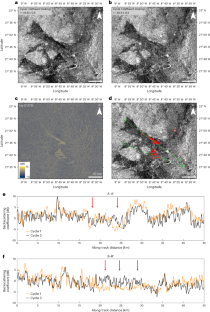
Similar content being viewed by others
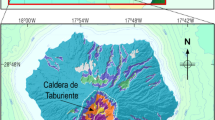
Detection of volcanic unrest onset in La Palma, Canary Islands, evolution and implications
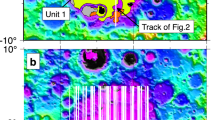
Volcanic history in the Smythii basin based on SELENE radar observation
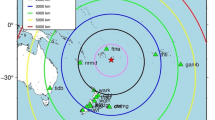
Tracking tsunami propagation and Island’s collapse after the Hunga Tonga Hunga Ha’apai 2022 volcanic eruption from multi-space observations
Data availability.
The Venus Magellan SAR F-BIDRs used in this work are available from the PDS geosciences node ( https://pds-geosciences.wustl.edu/missions/magellan/fbidr/index.htm ). Magellan altimetry data were extrapolated using the Altimeter and Radiometry Composite Data Record, which is also available from the PDS geosciences node ( https://pds-geosciences.wustl.edu/missions/Magellan/arcdr/index.htm ). Magellan Stereo-Derived Topography used in this work is also available from the PDS geosciences node ( https://pds-geosciences.wustl.edu/missions/magellan/stereo_topography.htm ). The source data images used for this paper can be found at https://doi.org/10.5281/zenodo.10875314 (ref. 47 ).
Code availability
The data have been processed using Matlab. Codes are available from the corresponding author upon reasonable request.
Truong, N. & Lunine, J. Volcanically extruded phosphides as an abiotic source of Venusian phosphine. Proc. Natl Acad. Sci. USA 118 , e2021689118 (2021).
Article Google Scholar
Esposito, L. W. Sulfur dioxide: episodic injection shows evidence for active Venus volcanism. Science 223 , 1072–1074 (1984).
Article ADS Google Scholar
Smrekar, S. E. et al. Recent hotspot volcanism on Venus from VIRTIS emissivity data. Science 328 , 605–608 (2010).
Bondarenko, N., Head, J. & Ivanov, M. Present‐day volcanism on Venus: evidence from microwave radiometry. Geophys. Res. Lett . https://doi.org/10.1029/2010GL045233 (2010).
D’Incecco, P. et al. Geologically recent areas as one key target for identifying active volcanism on Venus. Geophys. Res. Lett. 49 , e2022GL101813 (2022).
Gülcher, A. J., Gerya, T. V., Montési, L. G. & Munch, J. Corona structures driven by plume–lithosphere interactions and evidence for ongoing plume activity on Venus. Nat. Geosci. 13 , 547–554 (2020).
D’Incecco, P., López, I., Komatsu, G., Ori, G. G. & Aittola, M. Local stratigraphic relations at Sandel crater, Venus: possible evidence for recent volcano-tectonic activity in Imdr Regio. Earth Planet. Sci. Lett. 546 , 116410 (2020).
Herrick, R. R. & Hensley, S. Surface changes observed on a Venusian volcano during the Magellan mission. Science 379 , 1205–1208 (2023).
Van Zelst, I. Comment on ‘Estimates on the frequency of volcanic eruptions on Venus’ by Byrne and Krishnamoorthy (2022). J. Geophys. Res.: Planets 127 , e2022JE007448 (2022).
Byrne, P. K. Reply to Comment by I. van Zelst on ‘Estimates on the frequency of Volcanic eruptions on Venus’ (2022). J. Geophys. Res.: Planets 127 , e2022JE007666 (2022).
Byrne, P. K. & Krishnamoorthy, S. Estimates on the frequency of volcanic eruptions on Venus. J. Geophys. Res.: Planets 127 , e2021JE007040 (2022).
Ford, J. P. Guide to Magellan Image Interpretation (NASA, 1993).
Saunders, R. et al. Magellan mission summary. J. Geophys. Res.: Planets 97 , 13067–13090 (1992).
Copp, D. L. & Guest, J. E. Geologic Map of the Sif Mons Quadrangle (V-31), Venus . Report No. 2898 (US Geological Survey, 2007).
Hansen, V. L. Geologic Map of the Niobe Planitia Quadrangle (V-23), Venus . Report (US Geological Survey, 2009).
Herrick, R. R. & Sharpton, V. L. Implications from stereo‐derived topography of Venusian impact craters. J. Geophys. Res.: Planets 105 , 20245–20262 (2000).
Ford, P. G. & Pettengill, G. H. Venus topography and kilometer‐scale slopes. J. Geophys. Res.: Planets 97 , 13103–13114 (1992).
Herrick, R. R. Stereo-derived Topography for Venus from Cycle 1 and Cycle 3 Magellan FMAP Mosaics (PDS, 2020); https://pds-geosciences.wustl.edu/mgn/urn-nasa-pds-magellan_stereo_topography/document/magellan_stereo_topography_description.pdf
Pettengill, G. H., Ford, P. G. & Chapman, B. D. Venus: surface electromagnetic properties. J. Geophys. Res.: Solid Earth 93 , 14881–14892 (1988).
Campbell, B. A. Use and Presentation of Magellan Quantitative Data in Venus Mapping . Report 95-519 (US Geological Survey, 1995).
Muhleman, D. Symposium on radar and radiometric observations of Venus during the 1962 conjunction: radar scattering from Venus and the Moon. Astron. J. 69 , 34 (1964).
Tyler, G. L. et al. Magellan: electrical and physical properties of Venus’ surface. Science 252 , 265–270 (1991).
Theilig, E., Wall, S. & Saunders, R. Radar interpretation of lava fields as a function of incidence angle: implications for interpretation of Magellan SAR data on Venus. In Proc. 19th Lunar and Planetary Science Conference (eds Ryder, G. & Sharpton, V. L.) 323–333 (Cambridge Univ. Press and Lunar and Planetary Institute, 1989).
Weitz, C. M., Plaut, J. J., Greeley, R. & Saunders, R. S. Dunes and microdunes on Venus: why were so few found in the Magellan data? Icarus 112 , 282–295 (1994).
Greeley, R. et al. Wind-related features and processes on Venus: summary of Magellan results. Icarus 115 , 399–420 (1995).
Danklmayer, A., Doring, B. J., Schwerdt, M. & Chandra, M. Assessment of atmospheric propagation effects in SAR images. IEEE Trans. Geosci. Remote Sens. 47 , 3507–3518 (2009).
Duan, X., Moghaddam, M., Wenkert, D., Jordan, R. L. & Smrekar, S. E. X band and model of Venus atmosphere permittivity. Radio Sci. https://doi.org/10.1029/2009RS004169 (2010).
Hensley, S., Martin, J., Oveisgsharan, S., Duan, X. & Campbell, B. Radar performance modeling for Venus missions. In Proc. 16th VEXAG Meeting 2018 (eds Gilmore, M. S. et al.) 39 (LPI, 2018).
Hofgartner, J. et al. Transient features in a Titan sea. Nat. Geosci. 7 , 493–496 (2014).
Malin, M. C. Mass movements on Venus: preliminary results from Magellan cycle 1 observations. J. Geophys. Res.: Planets 97 , 16337–16352 (1992).
Meyer, F. J. & Sandwell, D. T. SAR interferometry at Venus for topography and change detection. Planet. Space Sci. 73 , 130–144 (2012).
Rowland, S. K., Smith, G. A. & Mouginis-Mark, P. J. Preliminary ERS-1 observations of Alaskan and Aleutian volcanoes. Remote Sens. Environ. 48 , 358–369 (1994).
Schaefer, L. N., Lu, Z. & Oommen, T. Post-eruption deformation processes measured using ALOS-1 and UAVSAR InSAR at Pacaya Volcano, Guatemala. Remote Sens. 8 , 73 (2016).
Fegley, B. Jr & Prinn, R. G. Estimation of the rate of volcanism on Venus from reaction rate measurements. Nature 337 , 55–58 (1989).
Papale, P., Garg, D. & Marzocchi, W. Global rates of subaerial volcanism on Earth. Front. Earth Sci. 10 , 922160 (2022).
Crisp, J. A. Rates of magma emplacement and volcanic output. J. Volcanol. Geotherm. Res. 20 , 177–211 (1984).
Hensley, S. et al. VISAR: bringing radar interferometry to Venus. In AGU Fall Meeting Abstracts , P32D-03 (American Geophysical Union, 2021).
Ghail, R. C. et al. VenSAR on EnVision: taking Earth observation radar to Venus. Int. J. Appl. Earth Obs. Geoinf. 64 , 365–376 (2018).
ADS Google Scholar
Smrekar, S. et al. VERITAS (Venus Emissivity, Radio Science, InSAR, Topography, and Spectroscopy): a discovery mission. In 2022 IEEE Aerospace Conference (AERO) 1–20 (IEEE, 2022).
Hensley, S. et al. Planned differential interferometric SAR observations at Venus by the Veritas mission. In IEEE International Geoscience and Remote Sensing Symposium (IGARSS) 12–15 (IEEE, 2022).
Widemann, T. et al. Venus evolution through time: key science questions, selected mission concepts and future investigations. Space Sci. Rev. 219 , 56 (2023).
Kittler, J. & Illingworth, J. Minimum error thresholding. Pattern Recognit. 19 , 41–47 (1986).
Lee, J.-S. Digital image enhancement and noise filtering by use of local statistics. IEEE Trans. Pattern Anal. Mach. Intell. 2 , 165–168 (1980).
Pettengill, G. H., Ford, P. G., Johnson, W. T., Raney, R. K. & Soderblom, L. A. Magellan: radar performance and data products. Science 252 , 260–265 (1991).
USGS EROS Archive - Digital Elevation - Global 30 Arc-Second Elevation (GTOPO30) (US Geological Survey, 2018); https://doi.org/10.5066/F7DF6PQS
Kilburn, C. R. in Encyclopedia of Volcanoes (eds Sigurdsson, H. et al.) 291–305 (Academic, 2000).
Sulcanese, D., Mitri, G. & Mastrogiuseppe, M. Source data files of ‘Evidence of ongoing volcanic activity on Venus revealed by Magellan radar’ by Sulcanese, D., et al. Zenodo https://doi.org/10.5281/zenodo.10875314 (2024).
Download references
Acknowledgements
We want to thank our collaborator G. Alberti for helping in processing Magellan radar products. G.M., D.S. and M.M. acknowledge support from the Italian Space Agency (Grant No. 2022-15-HH.0).
Author information
Authors and affiliations.
International Research School of Planetary Sciences, Università d’Annunzio, Pescara, Italy
Davide Sulcanese & Giuseppe Mitri
Dipartimento di Ingegneria e Geologia, Università d’Annunzio, Pescara, Italy
Dipartimento di Ingegneria dell’Informazione, Elettronica e Telecomunicazioni, Università La Sapienza, Rome, Italy
Marco Mastrogiuseppe
Link Campus University, Rome, Italy
You can also search for this author in PubMed Google Scholar
Contributions
D.S. led the writing of the paper, conducted all the analyses and interpreted the geological and geomorphological results presented in this article. G.M. was responsible for the conceptualization of the project and the manuscript, provided support in manuscript writing and assisted in the geological interpretation of the data. M.M. provided support in the analysis of the data, particularly in the radar and altimeter data analysis, and the interpretation of the results pertaining to the radar part. He also contributed to manuscript writing, specifically in the sections related to the electromagnetic models and alternative hypotheses regarding the radar section.
Corresponding author
Correspondence to Davide Sulcanese .
Ethics declarations
Competing interests.
The authors declare no competing interests.
Peer review
Peer review information.
Nature Astronomy thanks Paul Byrne and the other, anonymous, reviewer(s) for their contribution to the peer review of this work.
Additional information
Publisher’s note Springer Nature remains neutral with regard to jurisdictional claims in published maps and institutional affiliations.
Supplementary information
Supplementary information.
Supplementary Figs. 1–13 and Tables 1–4.
Rights and permissions
Springer Nature or its licensor (e.g. a society or other partner) holds exclusive rights to this article under a publishing agreement with the author(s) or other rightsholder(s); author self-archiving of the accepted manuscript version of this article is solely governed by the terms of such publishing agreement and applicable law.
Reprints and permissions
About this article
Cite this article.
Sulcanese, D., Mitri, G. & Mastrogiuseppe, M. Evidence of ongoing volcanic activity on Venus revealed by Magellan radar. Nat Astron (2024). https://doi.org/10.1038/s41550-024-02272-1
Download citation
Received : 21 March 2023
Accepted : 11 April 2024
Published : 27 May 2024
DOI : https://doi.org/10.1038/s41550-024-02272-1
Share this article
Anyone you share the following link with will be able to read this content:
Sorry, a shareable link is not currently available for this article.
Provided by the Springer Nature SharedIt content-sharing initiative
Quick links
- Explore articles by subject
- Guide to authors
- Editorial policies
Sign up for the Nature Briefing newsletter — what matters in science, free to your inbox daily.

IMAGES
VIDEO
COMMENTS
The benefits of this new 2nd edition. Restructured content for a better learning experience. Enriched content with extensive real-world examples. Bite-size lessons on each topic to fit busy schedules. Strategies to apply narrative tools when writing research papers. Detailed examples for explaining concepts, taken from real papers where possible.
Create a research paper outline. Write a first draft of the research paper. Write the introduction. Write a compelling body of text. Write the conclusion. The second draft. The revision process. Research paper checklist. Free lecture slides.
We've covered a lot of ground here. To recap, the three steps to writing a high-quality research paper are: To choose a research question and review the literature. To plan your paper structure and draft an outline. To take an iterative approach to writing, focusing on critical writing and strong referencing.
Writing a research paper can seem like a daunting task, but if you take the time in the pages ahead to learn how to break the writing process down, you will be amazed at the level of comfort and control you feel when preparing your assignment. Mailing Address: 3501 University Blvd. East, Adelphi, MD 20783. This work is licensed under a Creative ...
This interactive resource from Baylor University creates a suggested writing schedule based on how much time a student has to work on the assignment. "Research Paper Planner" (UCLA) UCLA's library offers this step-by-step guide to the research paper writing process, which also includes a suggested planning calendar.
Complete the topics within "Writing for research" and increase your chances of getting published. Topics. 4 topics. Modules. 28 modules. Modules in Writing for research . All. ... Creating visual abstracts" module, Mark Belan will guide you in selecting your visual components and portraying the outcome precisely, as well as prepari Save ...
Writing research papers is an important part of your college learning experience, training you to research and write effectively. However, if you don't know how to start, writing a research paper can be a daunting task. Don't worry! We will guide you through the process. The sections in this step-by-step guide allow you to learn at your own pace.
This is the first edition of the 'Writing a Research Paper' course. We recommend you take the updated, second edition of the course even if you have already started this older version. 'Writing a Research Paper' focuses on how to write an effective, clear and concise article that will appeal to a broad audience as well as attracting the attention of your peers.
Whether you're writing a paper for class, developing a research proposal, or writing a journal article for publication, completing this self-paced program will broaden your understanding of research writing and help you organize your thoughts, write more clearly, and save you time. ... Module 1 Overview of Research Process. Anything you write ...
Step 4: Create a Research Paper Outline. Outlining is a key part of crafting an effective essay. Your research paper outline should include a rough introduction to the topic, a thesis statement, supporting details for each main idea, and a brief conclusion. You can outline in whatever way feels most comfortable for you.
Step 1: Understand your instructor's expectations for how to write a research paper. Step 2: Brainstorm research paper ideas. Step 3: Conduct research. Step 4: Define your thesis statement. Step 5: Make a research paper outline. Step 6: Write! Step 7: Edit, edit, and edit again. Step 8 (optional): Create a title page.
The introduction leads the reader from a general subject area to a particular topic of inquiry. It establishes the scope, context, and significance of the research being conducted by summarizing current understanding and background information about the topic, stating the purpose of the work in the form of the research problem supported by a hypothesis or a set of questions, explaining briefly ...
Course Introduction. Module 1 • 20 minutes to complete. This is the last course in the Academic English: Writing specialization. In this course, you will learn all of the steps to writing a research paper. You will learn how to choose topics, where to do your research, and how to plan the research paper. You will also master your ...
Below is a step-by-step guide to starting and completing your research paper. Organize your papers in one place. Try Paperpile. No credit card needed. Get 30 days free. 1. Choose your topic. Choose a topic that interests you. Writing your research paper will be so much more pleasant with a topic that you actually want to know more about.
After writing the paper comes the time of reading your paper a few times in order to get everything perfect.In this section you will learn how to remove a lot of mistakes you might have been writing. In the end, you will have to build your own checklist corresponding to your own problems you want to avoid.
Step 4: Construct an Outline. Once you have collected all of the research, it may be helpful to organize your thoughts with an outline. To construct an outline, you must group your notes together and match information that fits together. An outline should be formatted in this manner: I. II. III.
Definition: Research Paper is a written document that presents the author's original research, analysis, and interpretation of a specific topic or issue. It is typically based on Empirical Evidence, and may involve qualitative or quantitative research methods, or a combination of both. The purpose of a research paper is to contribute new ...
This article walks through the formatting steps needed to create an APA Style student paper, starting with a basic setup that applies to the entire paper (margins, font, line spacing, paragraph alignment and indentation, and page headers). It then covers formatting for the major sections of a student paper: the title page, the text, tables and ...
Title page. (see sample on p. 41 of APA manual) Title should be between 10-12 words and should reflect content of paper (e.g., IV and DV). Title, your name, and Hamilton College are all double-spaced (no extra spaces) Create a page header using the "View header" function in MS Word. On the title page, the header should include the following:
There are 6 modules in this course. Welcome to the capstone project for the Academic English: Writing Specialization! This project lets you apply everything you've learned and gives you the practice you need for college classes by having you write a research paper. You'll have several due dates throughout the capstone to help you stay on ...
The discussion section is often considered the most important part of your research paper because it: Most effectively demonstrates your ability as a researcher to think critically about an issue, to develop creative solutions to problems based upon a logical synthesis of the findings, and to formulate a deeper, more profound understanding of the research problem under investigation;
1. The Title. The title should be specific and indicate the theme of the research and what ideas it addresses. Use keywords that help explain your paper's topic to the reader. Try to avoid abbreviations and jargon. Think about keywords that people would use to search for your paper and include them in your title. 2.
- The Writing Process: These features show all the steps taken to write a paper, allowing you to follow it from initial idea to published article. - Into the Essay: Excerpts from actual papers show the ideas from the chapters in action because you learn to write best by getting examples rather than instructions. Much of my approach to ...
Before you start conducting a research: 4 prewriting strategies. Before diving into your study, laying a strong foundation by following these preparatory steps is essential. 1. Select and narrow your topic. Start by selecting a specific and manageable topic for your project.
An AI tool is your phone's autocomplete function than a human researcher. Another worry is that AI outputs might be biased in ways that could seep into the scholarly record. Infamously, older ...
There are various factors that should be borne in mind in academic writing. The writing should be clear and precise. It should be well structured with a clear focus while demonstrating the rigor with which the research was conducted. Long winding sentences and emotional language must be completely avoided. While discipline specific language ...
Richard Primack offers advice for how to be a happy, healthy and productive researcher year after year. As a contented and productive senior professor at a major research university, colleagues and students often ask me for advice. They wonder about achieving work-life balance, interacting with students, navigating administrative challenges, writing papers and grant proposals, and many other ...
The paper presents the sectoral block of the 2018 Version of the Romanian macro-model. Similarly to the previous one, this one orbits around the input-output tables. The method of estimating the A matrix in two phases is employed, as follows: a) econometric determination of its row and column sums by longest stable VAR procedure, and b ...
According to a recent study 8, an ~2.2 km 2 volcanic vent that changed shape during an 8 month period between two radar images taken by the Magellan spacecraft has been interpreted as evidence of ...